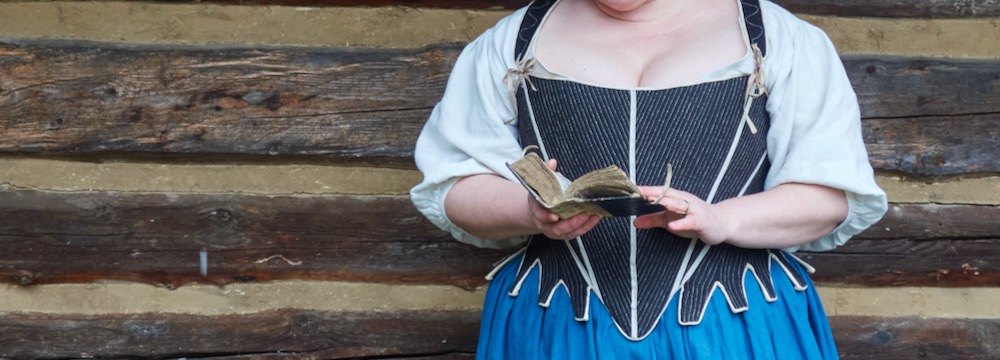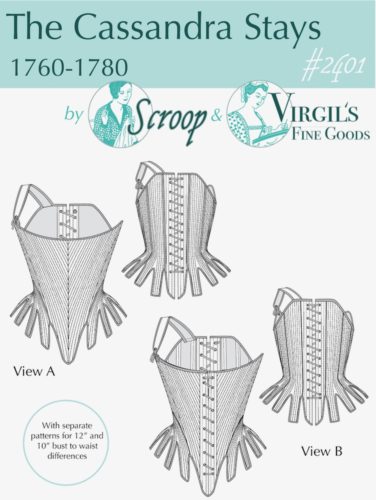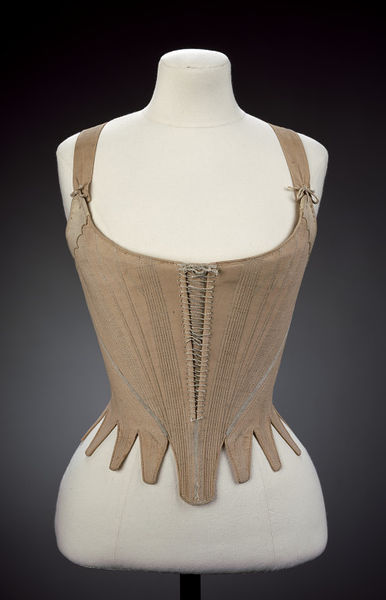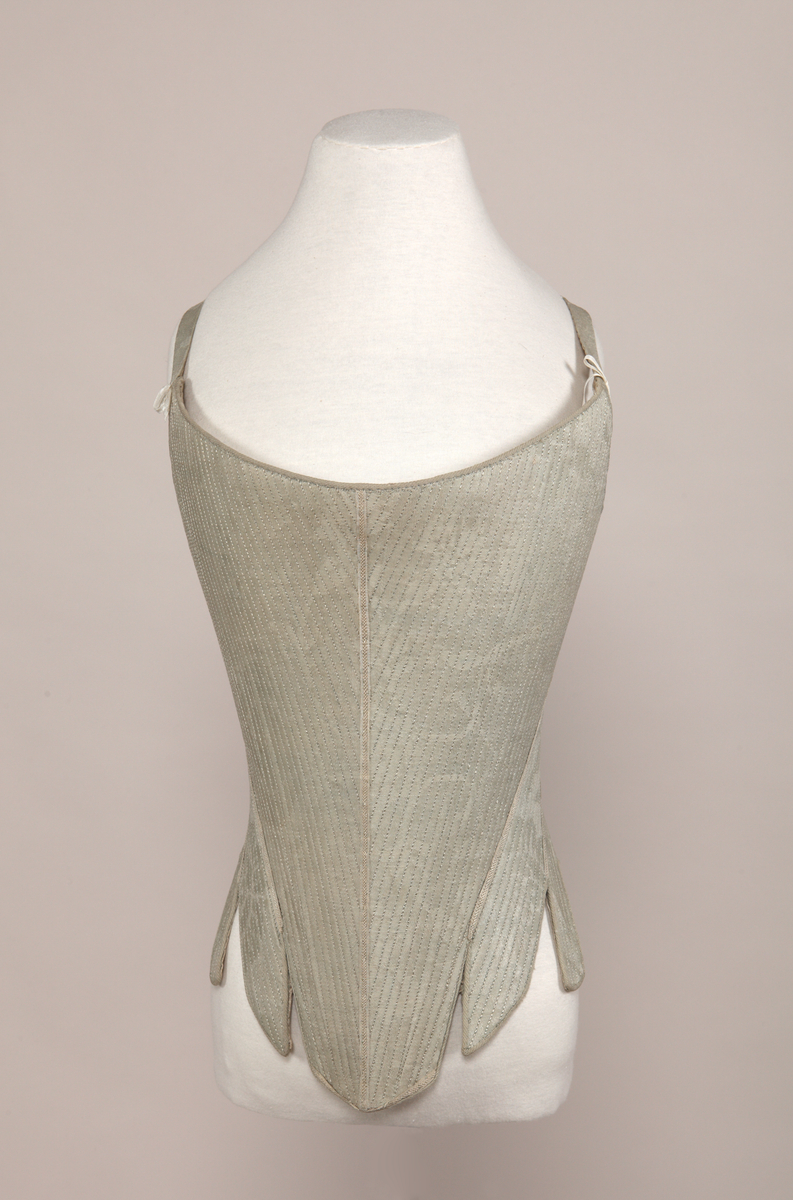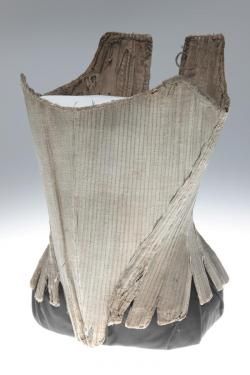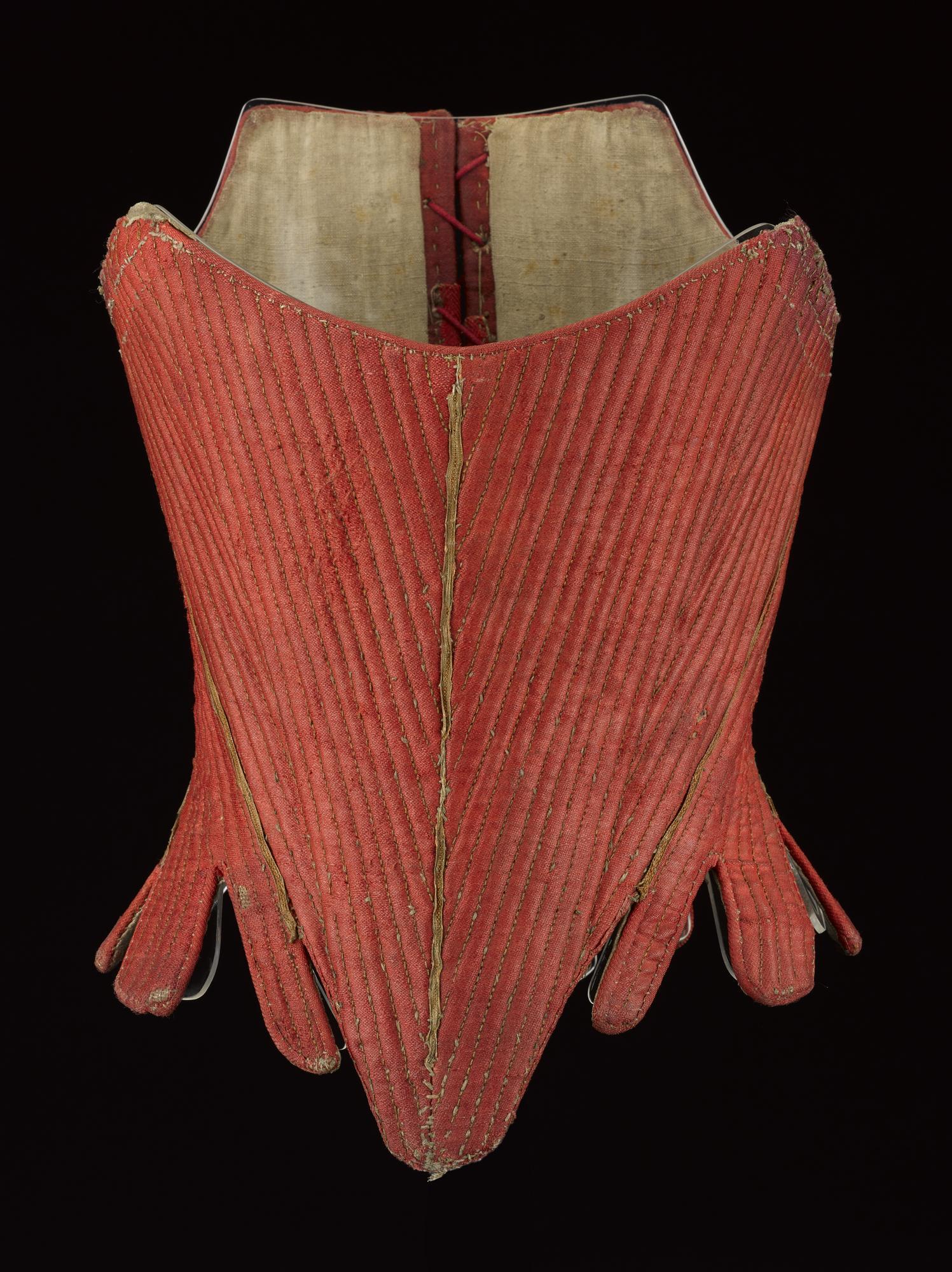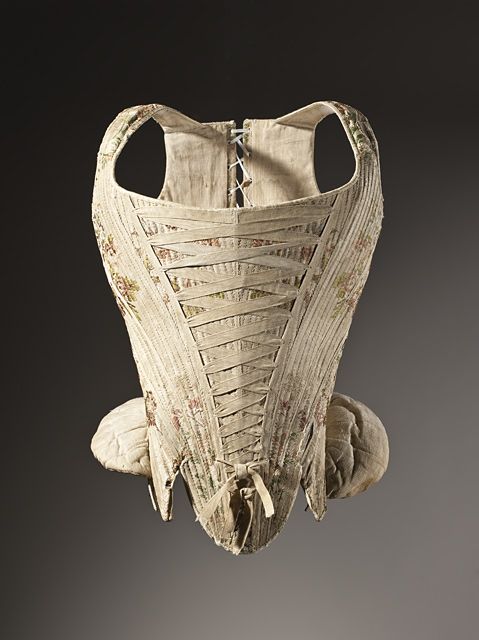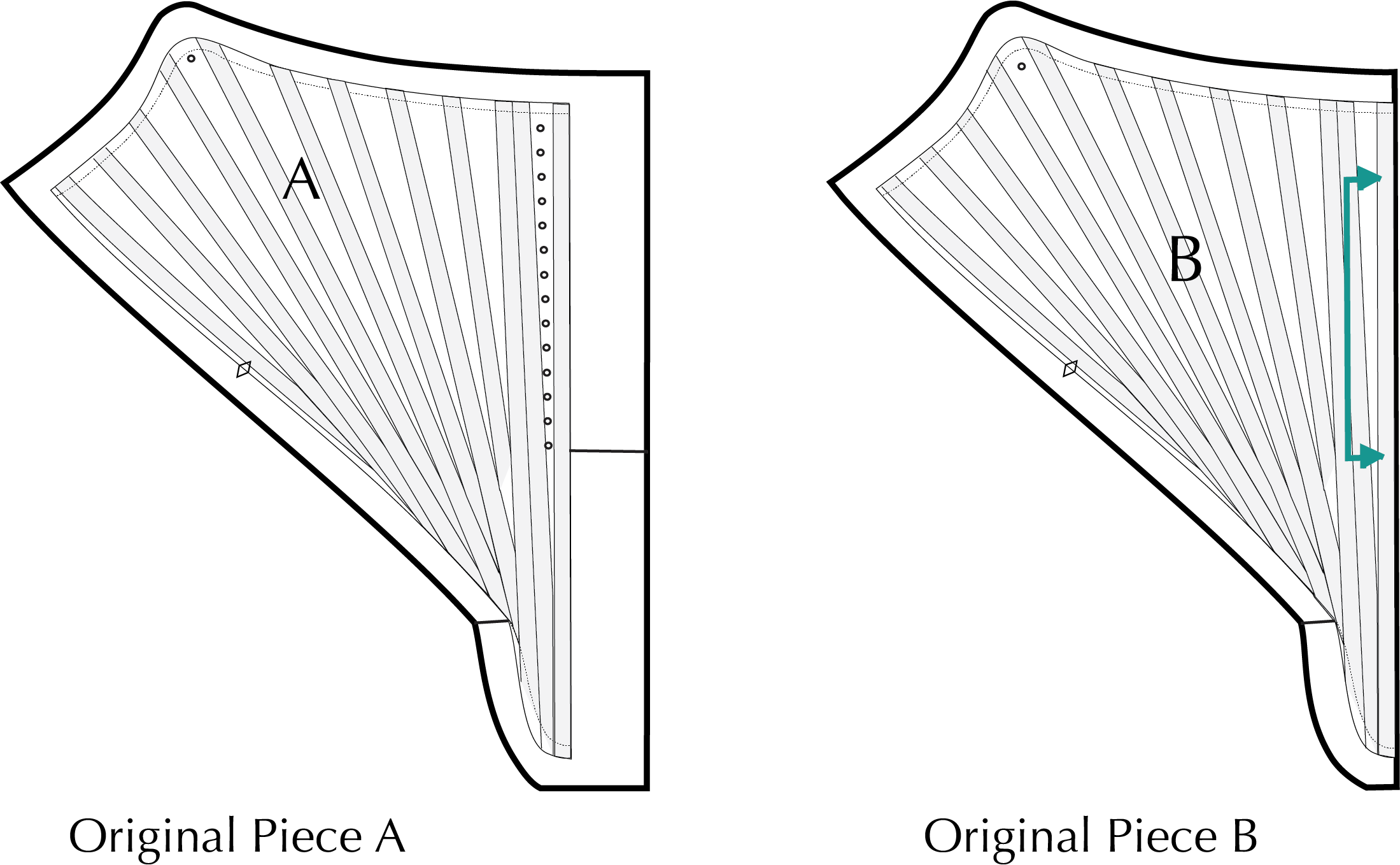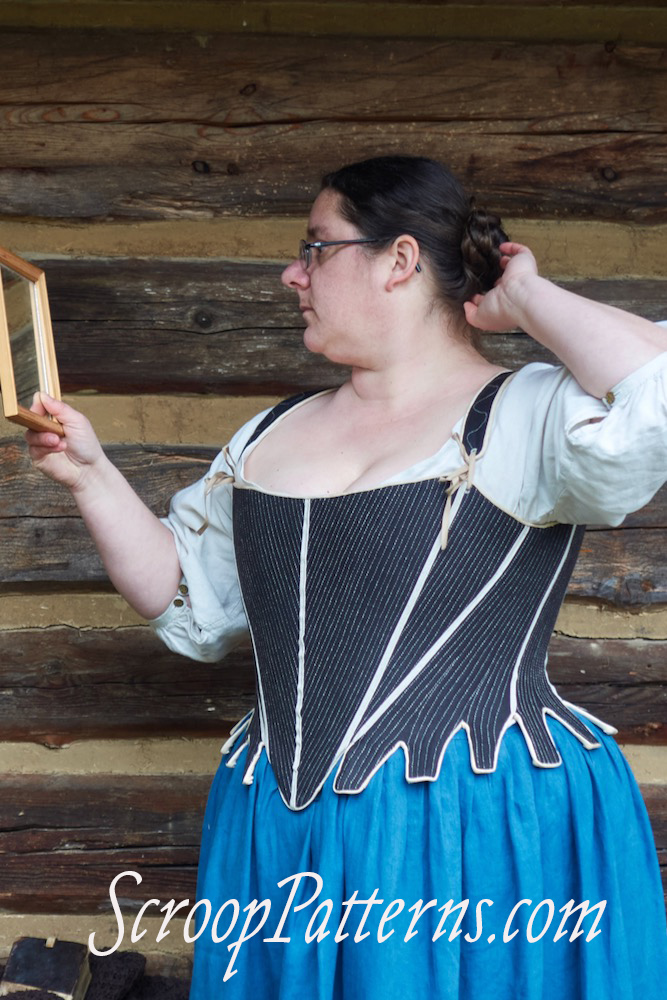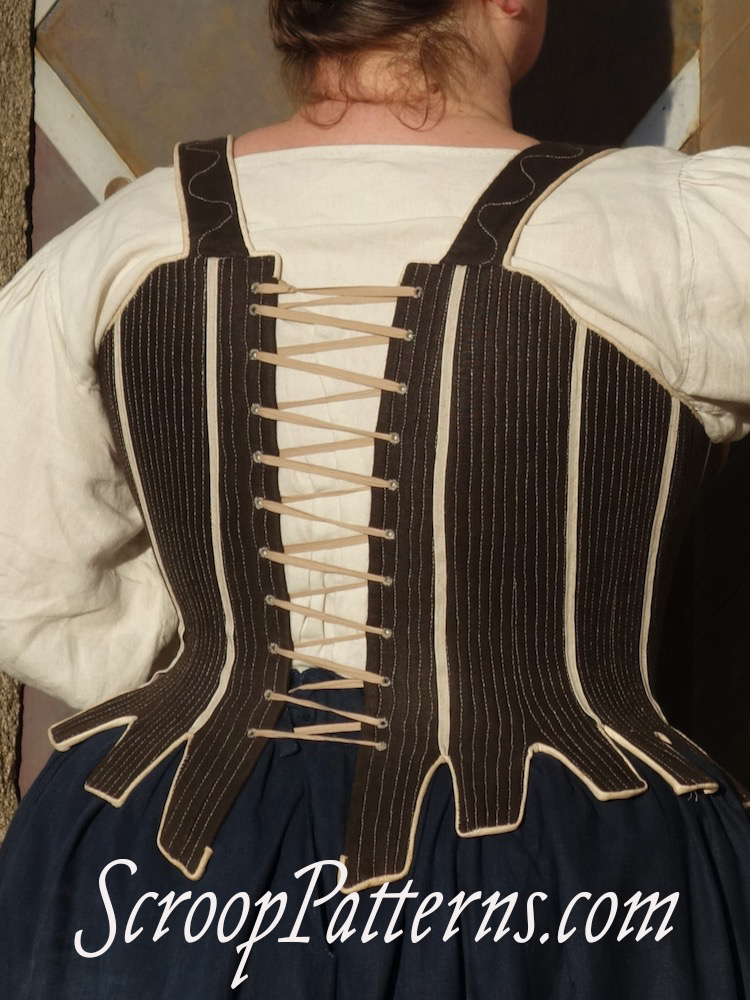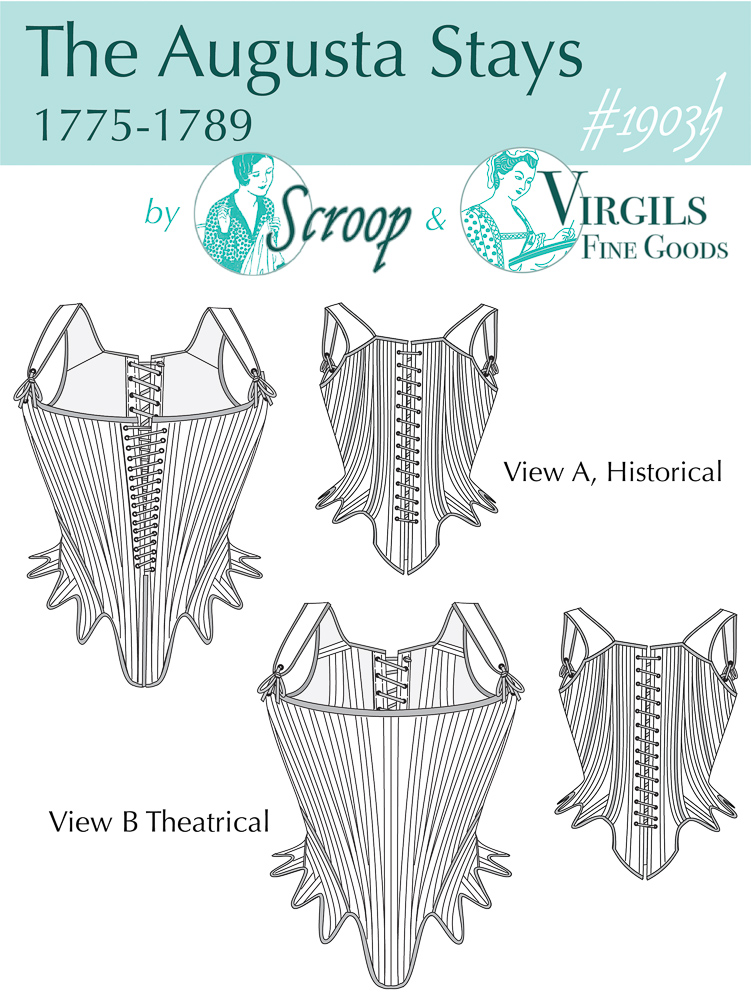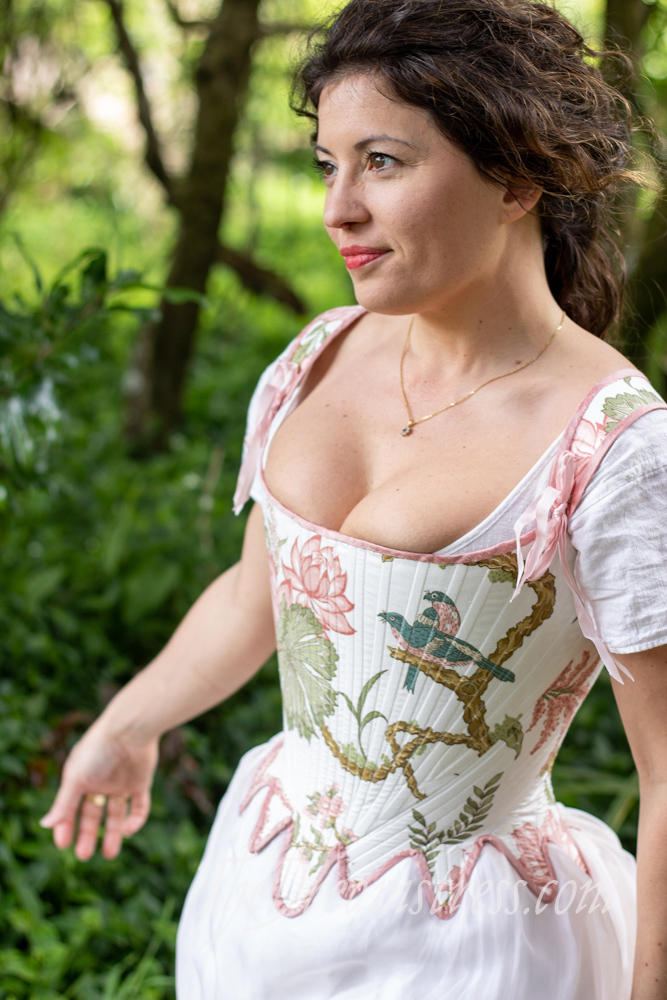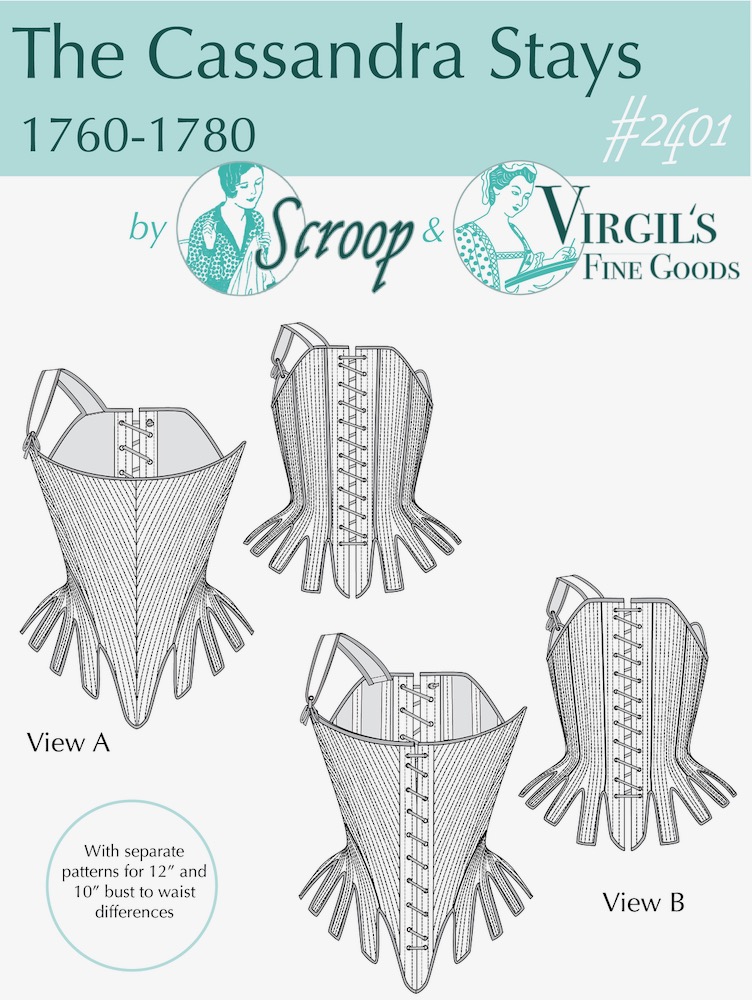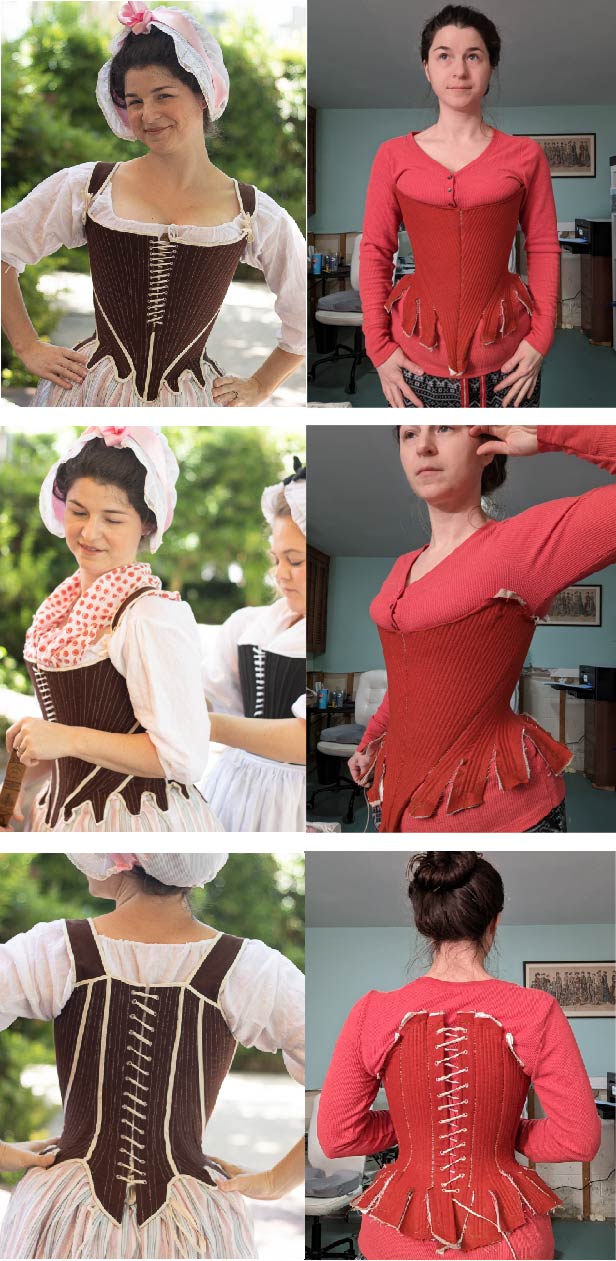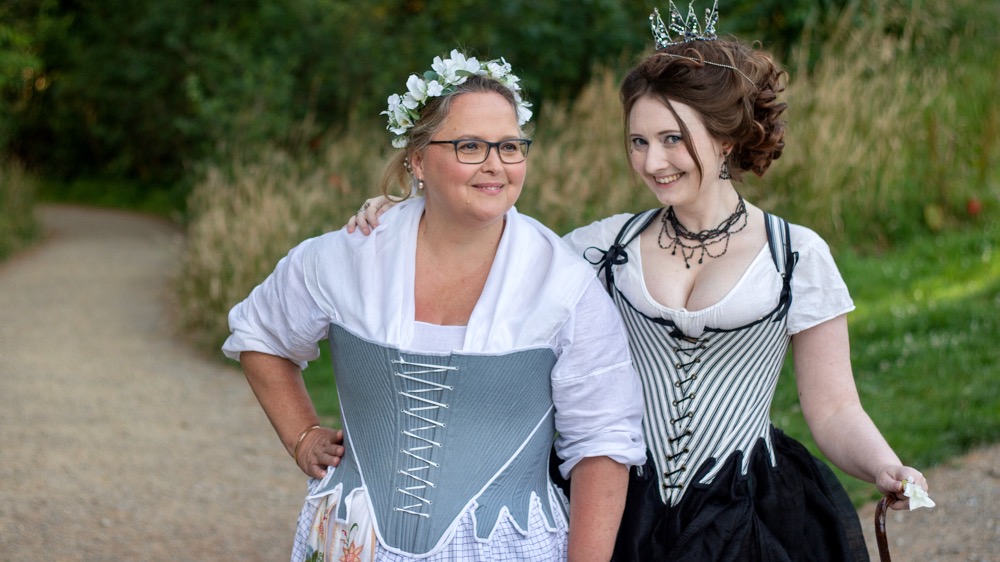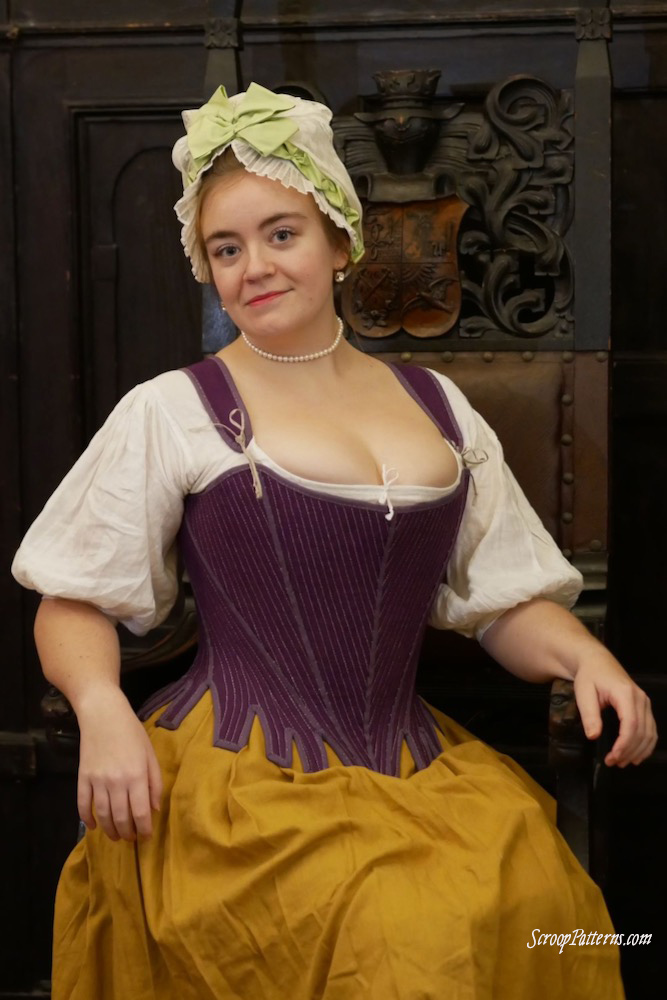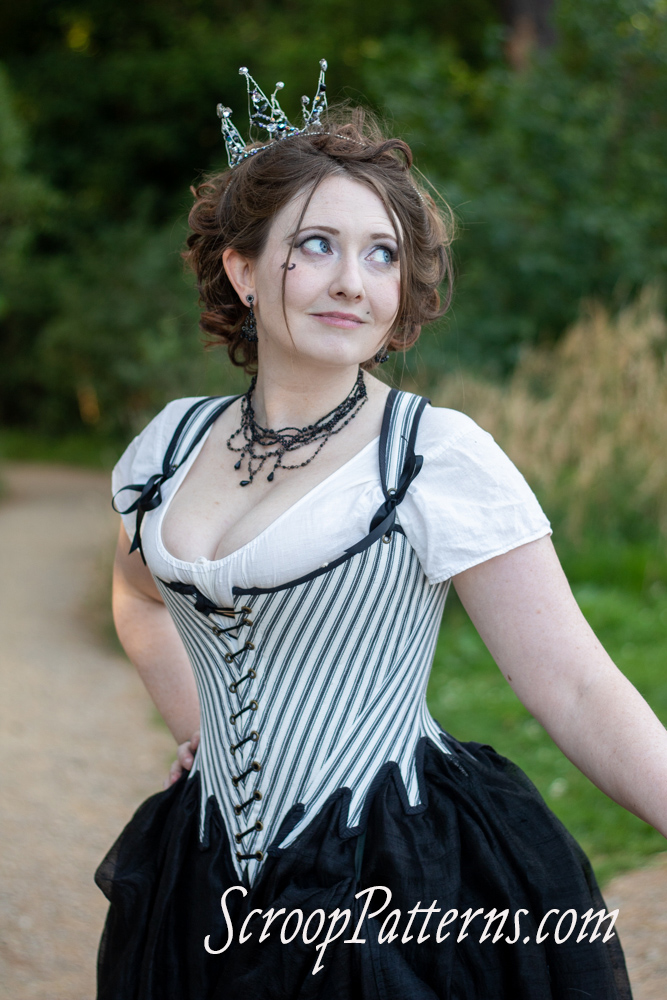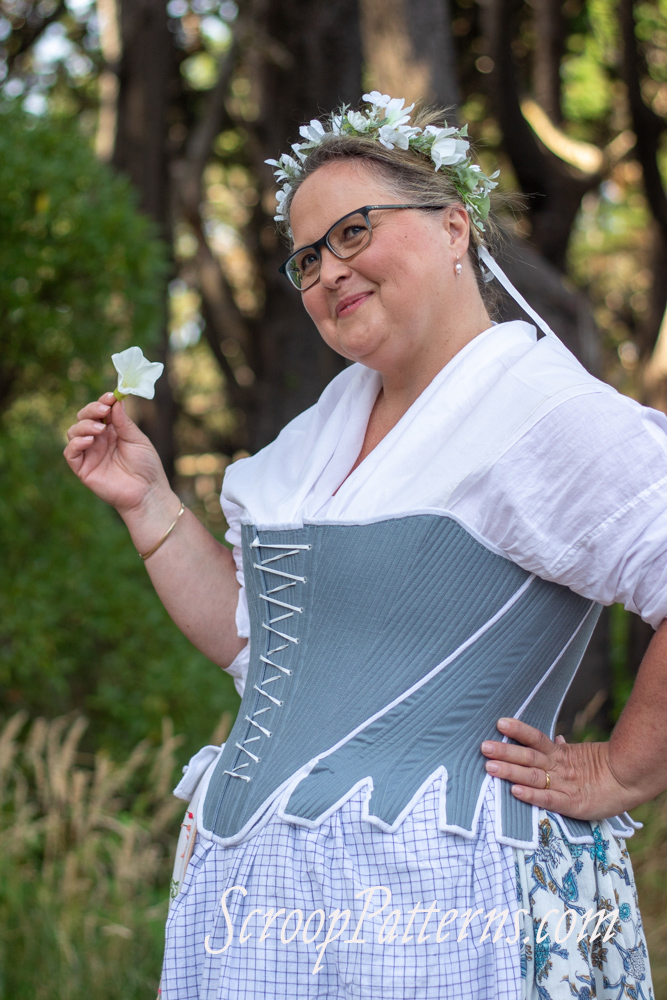It’s the absolute best part of a pattern launch: time to show off the tester makes!
Pattern testers are super fabulous from our end, because they help us ensure we deliver you the best possible pattern. They ask about instructions that are confusing. They provide feedback on the fit on a whole range of bodies. Based on their input we’re able to smooth off any final rough corners, and adjust the fit to make sure it will work for as many people as possible straight out of the packet – and that we have good fit and alteration guidance for when it doesn’t.
Pattern testers are super fabulous for you because their photos show what the pattern looks like styled in a whole range of different ways, on a whole range of bodies, in different fabrics. There are always testers who do gorgeous things with the pattern that never even occurred to me! So inspirational! 💛
So we are so very, very grateful to the people who are willing to pattern test, because their input makes our patterns so much better in ever way. Thank you so much!
Testing stays is a particularly big ask, and our testers for this round were not only phenomenally helpful with feedback – they made the most stunning collection of Cassandra Stays. Here they are!
View B:
Mem of @starandscissor
We always like to have a mix of new testers (for new perspectives) and testers we have worked with before (so we know our instructions and fit are consistent), and when Mem applied to test we were very excited to have her, because she did such a beautiful job with her Aidah Gown. She did an equally beautiful job with here Cassandra Stays, and sent us so many excellent photos showing the lovely shape they create:
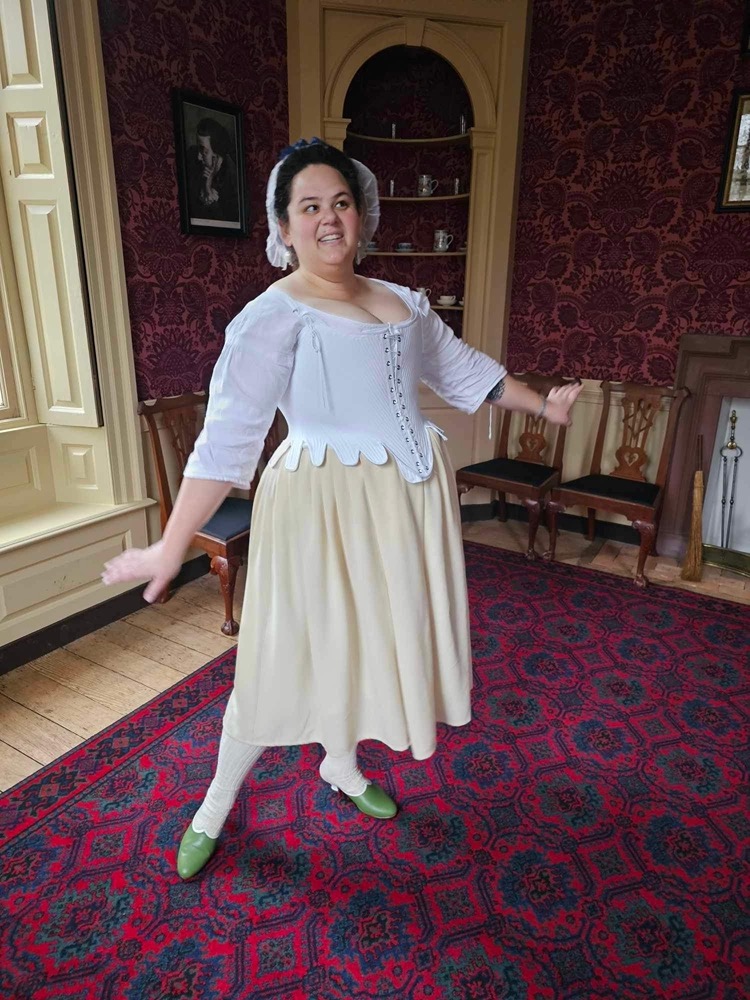
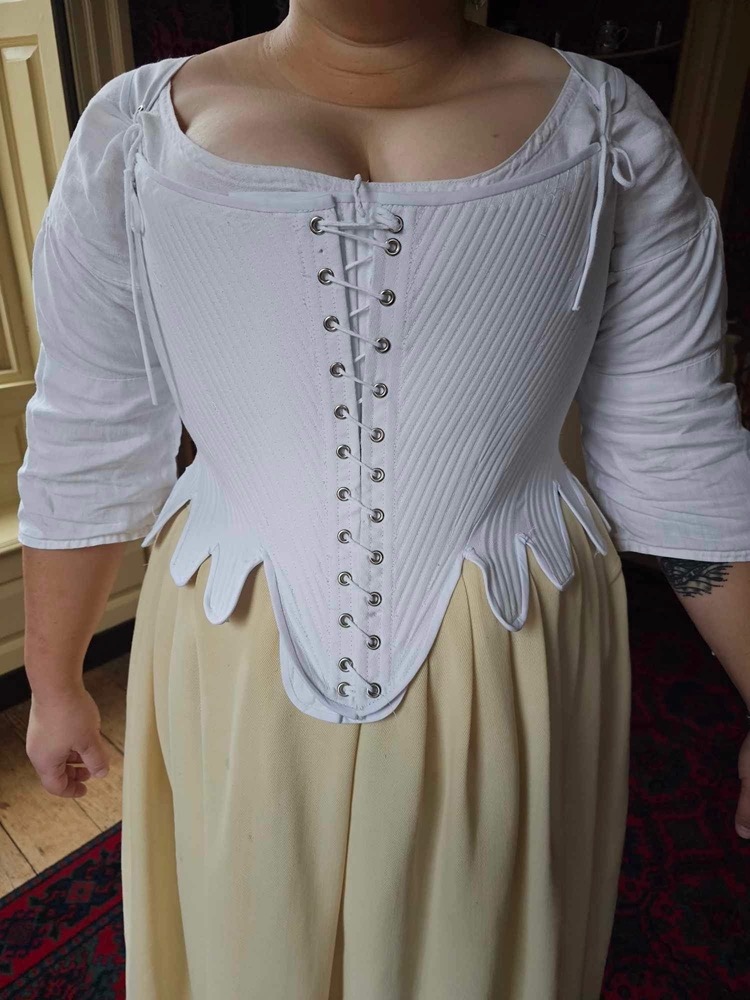
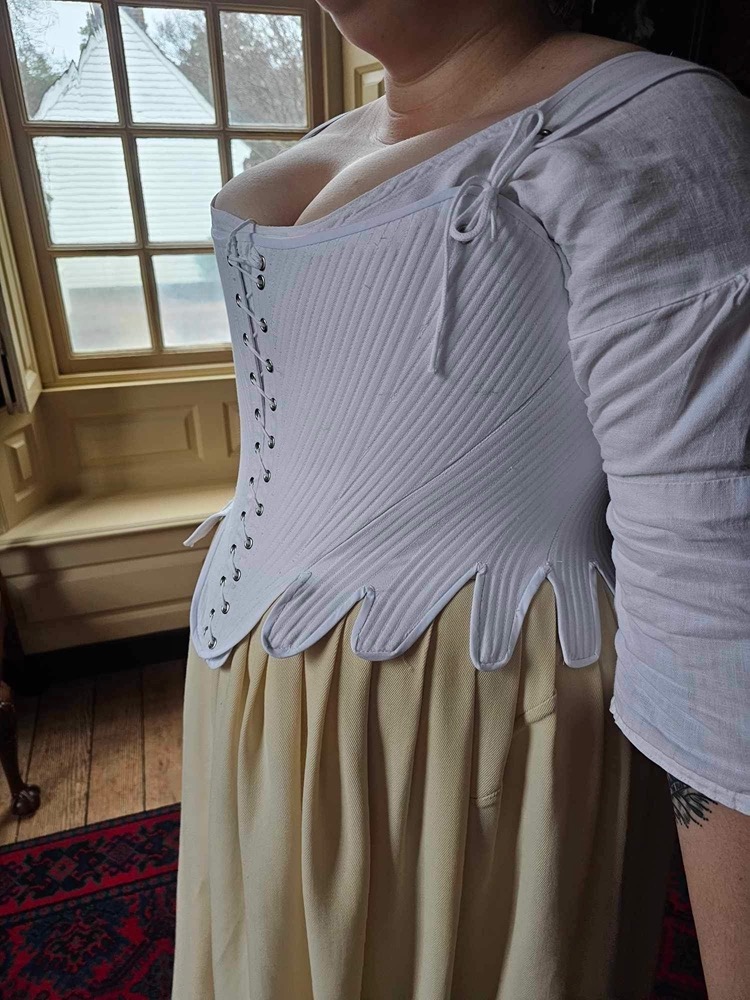
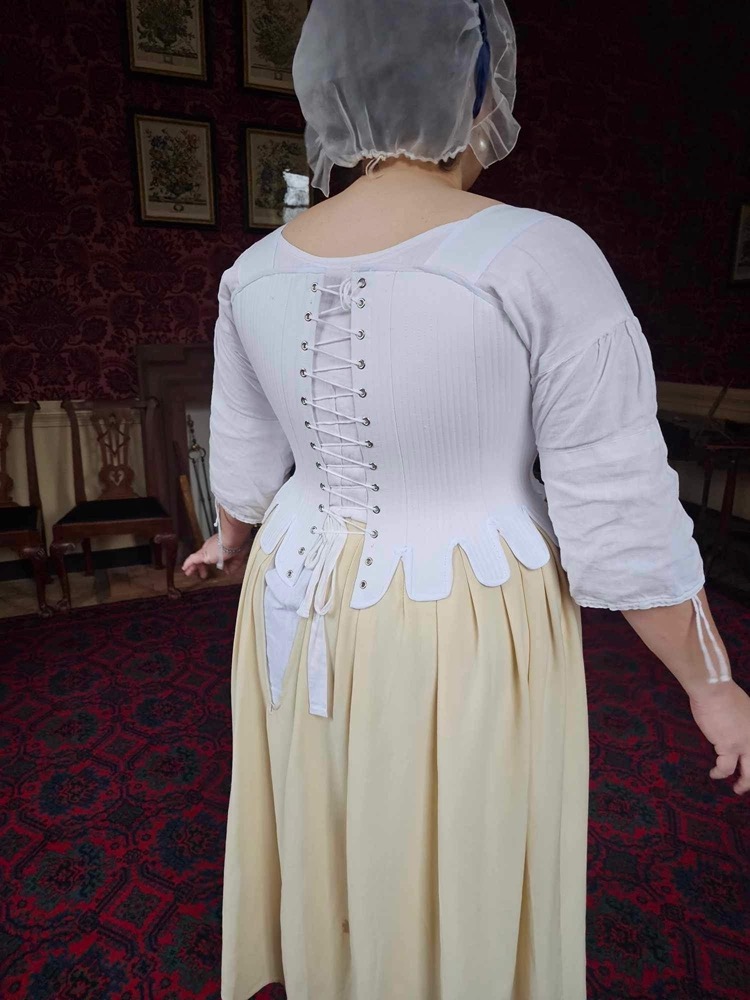
Not only did Mem provide images of the stays, she also took photos of them worn under her Aidah gown, so you can see how they look under a garment. So helpful!
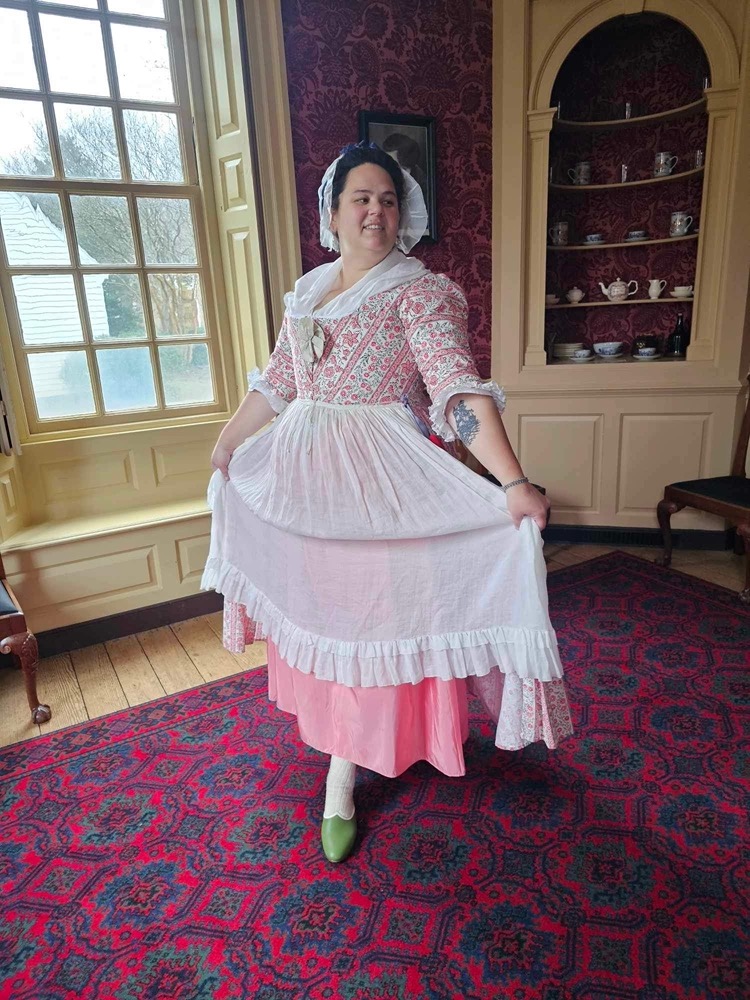
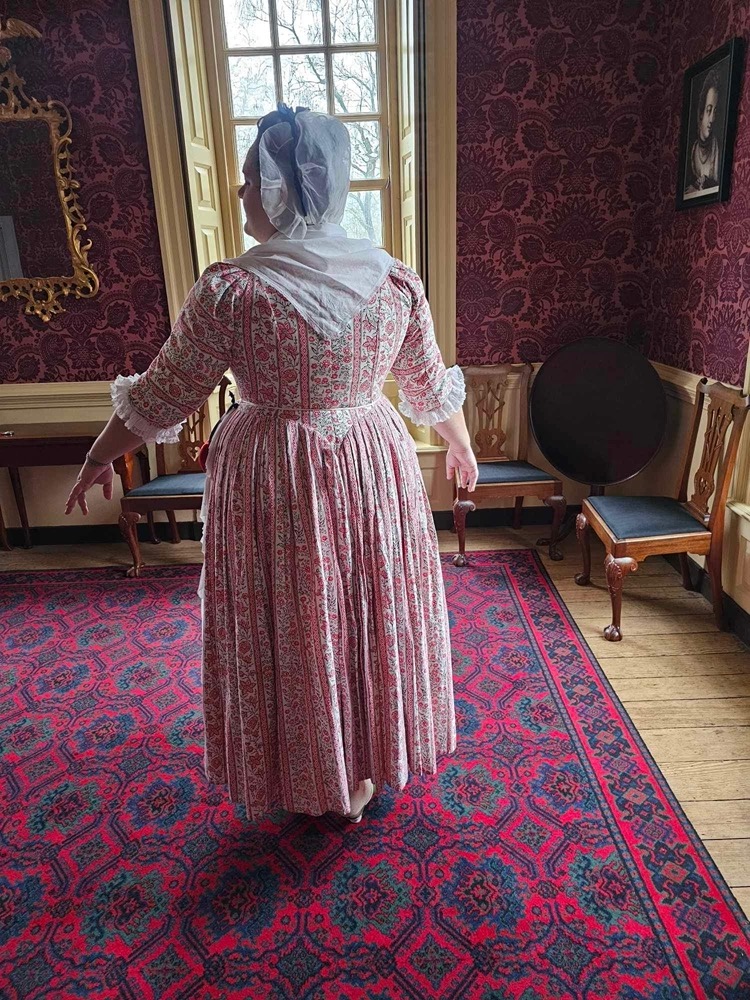
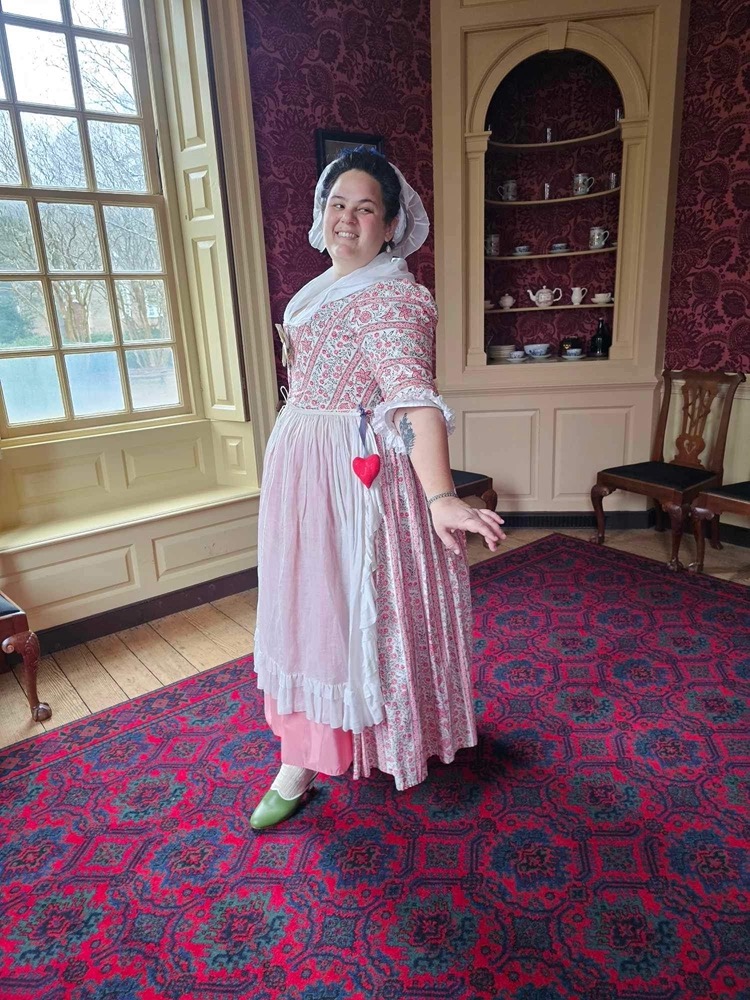
And now I love this dress even more than I did when she first made it!
Mem made View B, Theatrical, in Size 46 Curvy, with 5/8’’/1.5cm added to the top edge of the stays. She used cotton coutil for her stays in white – a perfect neutral base for her fabulous outfits!
Spencer of @thimbleraven
You’re going to see a lot of pink and purple in this post, because those were the colours of the season when it came to the Cassandra Stays testing group (I approve. Cassandra is a pinky-purple name). First up is this delightful peach pair by Spencer:
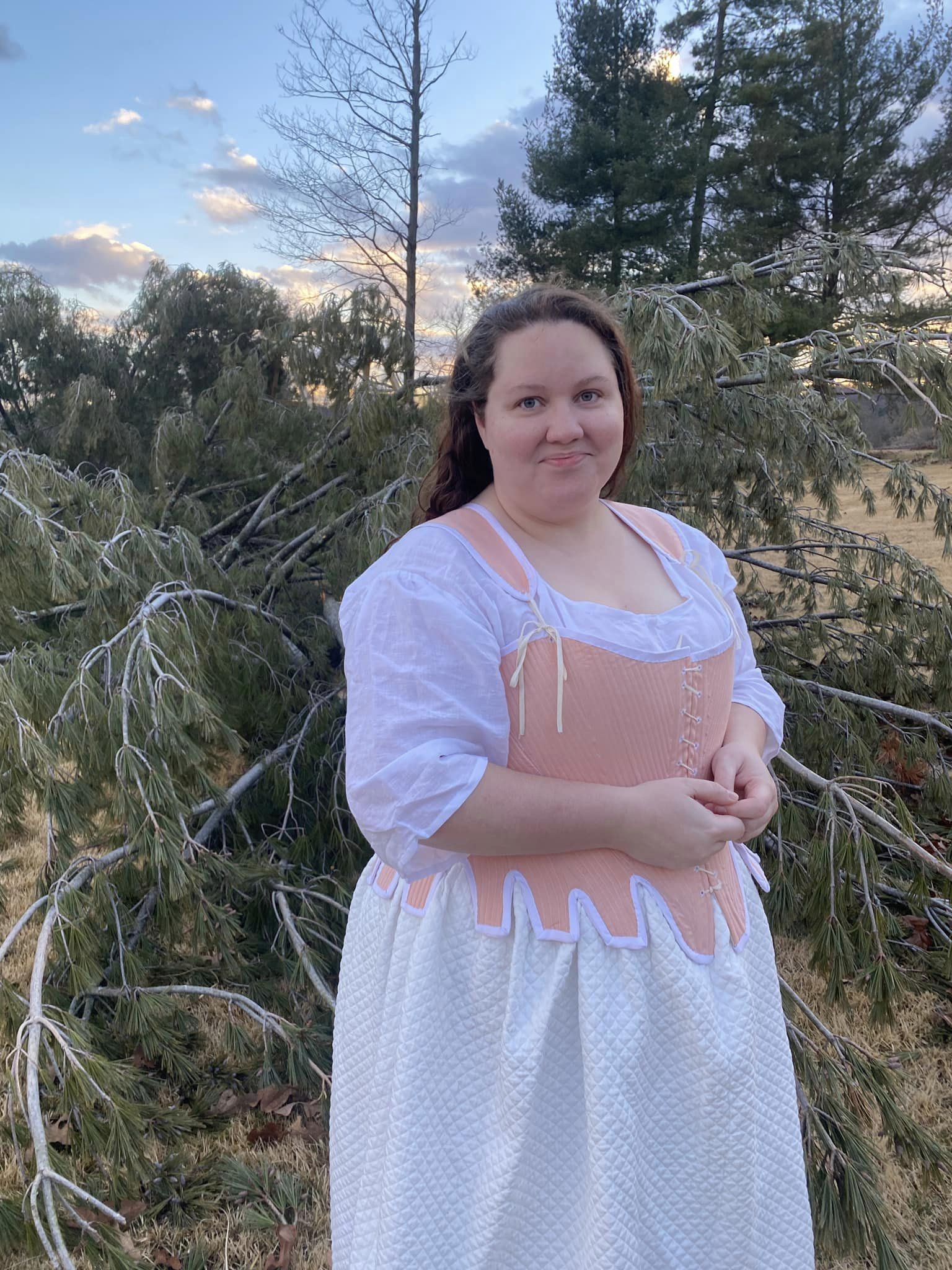
Spencer made View B, and combined the instructions, doing the hand-worked eyelets and hand-sewn binding from the Historical instructions, and doing everything else by machine. And, as you can see, the result is lovely!
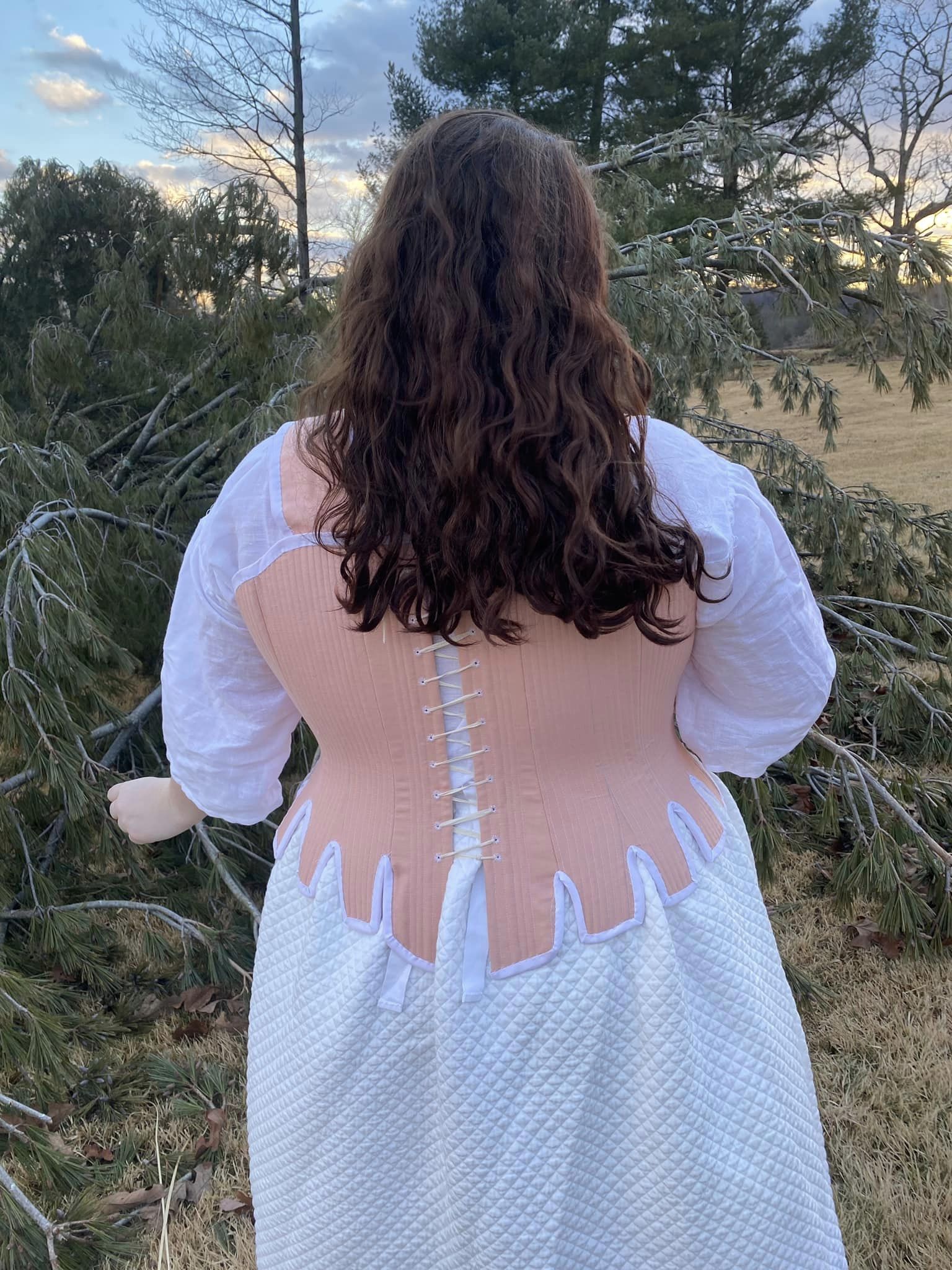
Look at that perfectly even lacing gap!
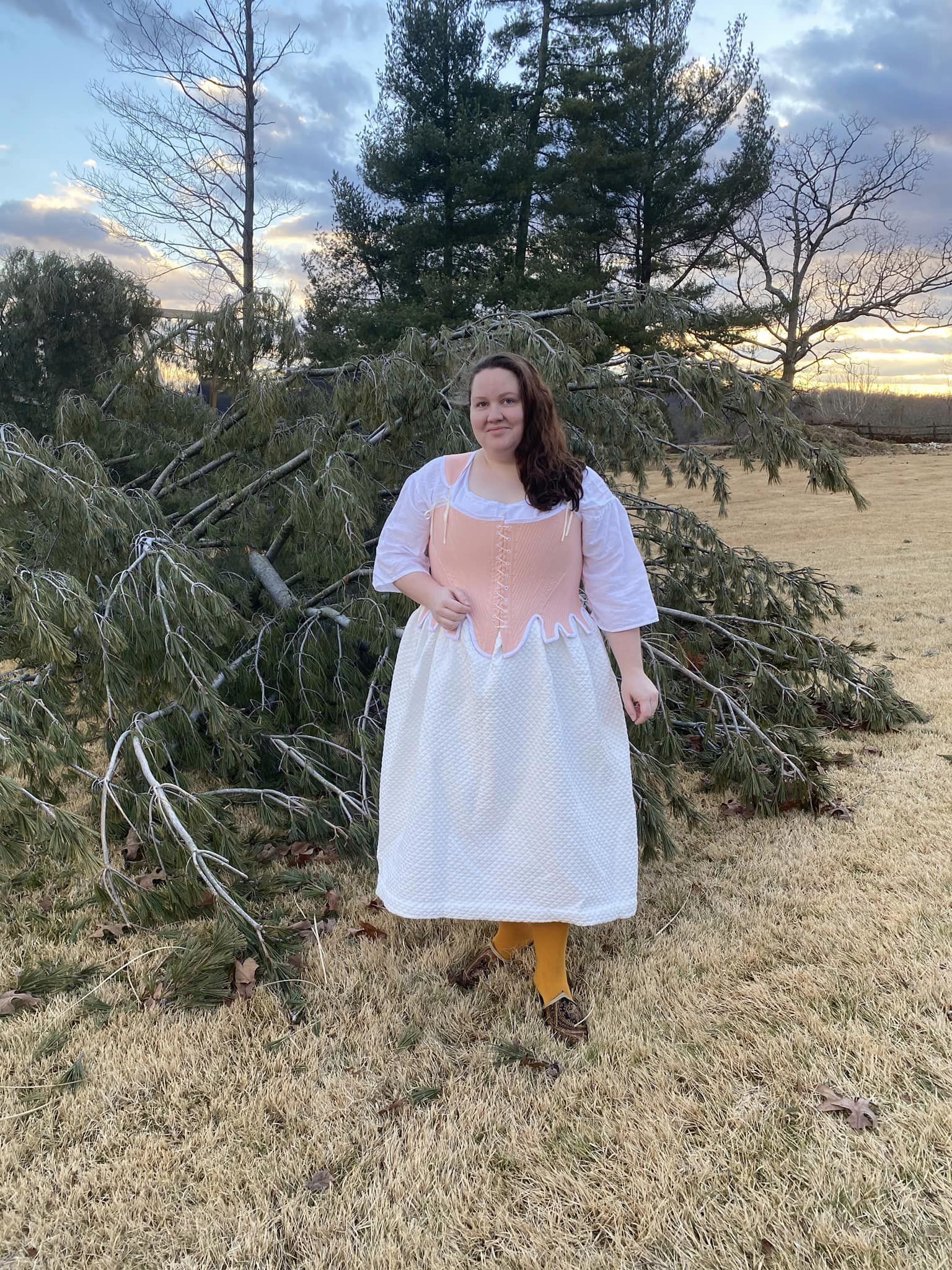
Spencer made a Size 52. Her outer fabric is linen, and the support fabric is two layers of cotton canvas.
She said of the pattern “It’s a great pattern! I’d even recommend it to advanced beginner or intermediate sewists as a first stays pattern. The boning channels are straightforward and easy to sew after marking just the guideline channels. The shape of the panels makes it fairly straightforward to tweak with any fit issues if needed. Having a front lacing option is wonderful for those who struggle with (or don’t enjoy) lacing themselves in from behind. ”
Be sure to check out her instagram to see her beautiful Sophia Mantle, and Aidah Gown, and Marie Mantle, and Amalia Jacket, and Persis Corset (I think she’s working her way though all our patterns!)
Nina of @ninavirgo
Nina was both a tester, and a model. And she’s my pattern editor! And general partner in crime…
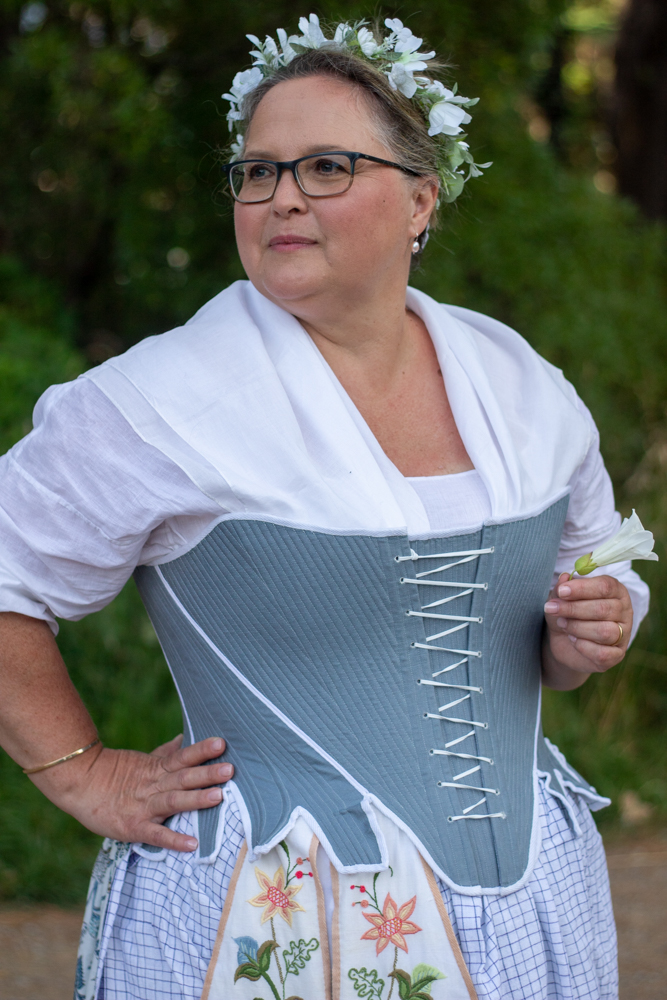
She’s the best kind of friend: the kind who supports you, but also tells you when you can do better, so I absolutely trust her to point out anything that could be improved with a pattern. Which she did!
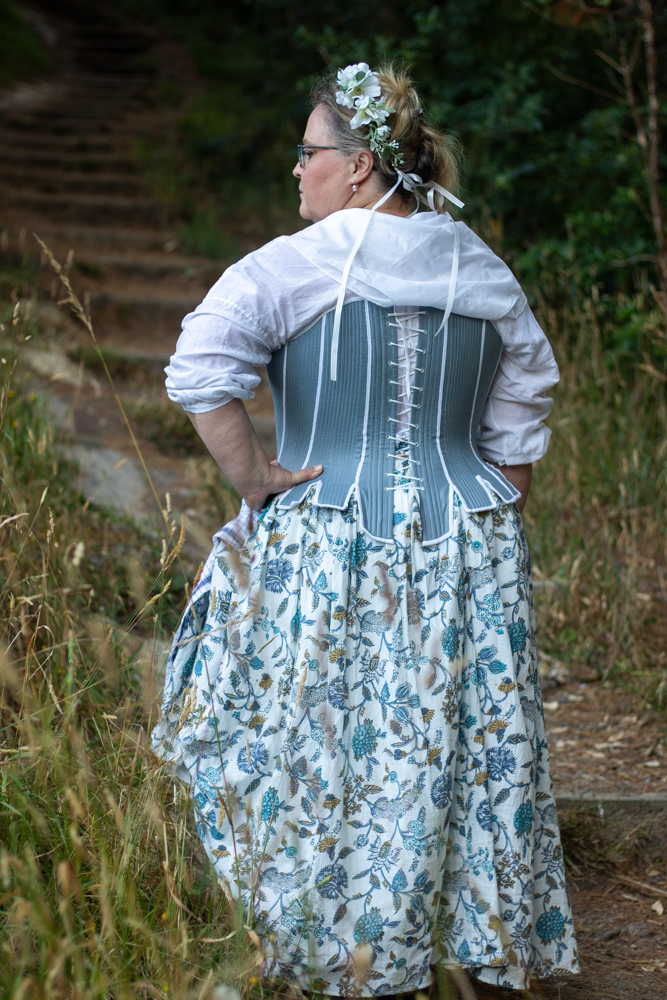
And she made a beautiful pair of Cassandra Stays, with a teeny bit of help from me (I did her front eyelets because I love doing eyelets) and then we got to have a delightful and hilarious, if very sticky, photoshoot on a day that set temperature records for Wellington (only for them to be broken the next day!)
I’m not kidding about hilarious. Here’s a few of Nina playing ‘My precious’ and ‘What’s she got in her pocketses’ with a pinecone.’


She just really loves pinecones…
(and we really love her sneaky weather appropriate shoes!)
Nina is wearing View B: Theatrical in Size 46 Straight Fit in saxon blue linen bound with cotton tape. Nina is 5’2” and her stays have been shortened 1/2”/1.2cm. Her stays are worn laced open over a stomacher for a comfortable fit. They can be laced fully closed for a more high-fashion fit. She has mixed the Historical and Theatrical pattern and instructions, with the Theatrical pattern, machine sewing, but hand-worked eyelets and tape binding.
View A
Cecilia of @cecilia_theresa_design
Cecilia is another repeat tester who made the Aidah Gown, but this time she wasn’t sewing for herself. She collaborated with her friend Jasmin of @mangaliker148 and made her this utterly stunning pair of Cassandra Stays:
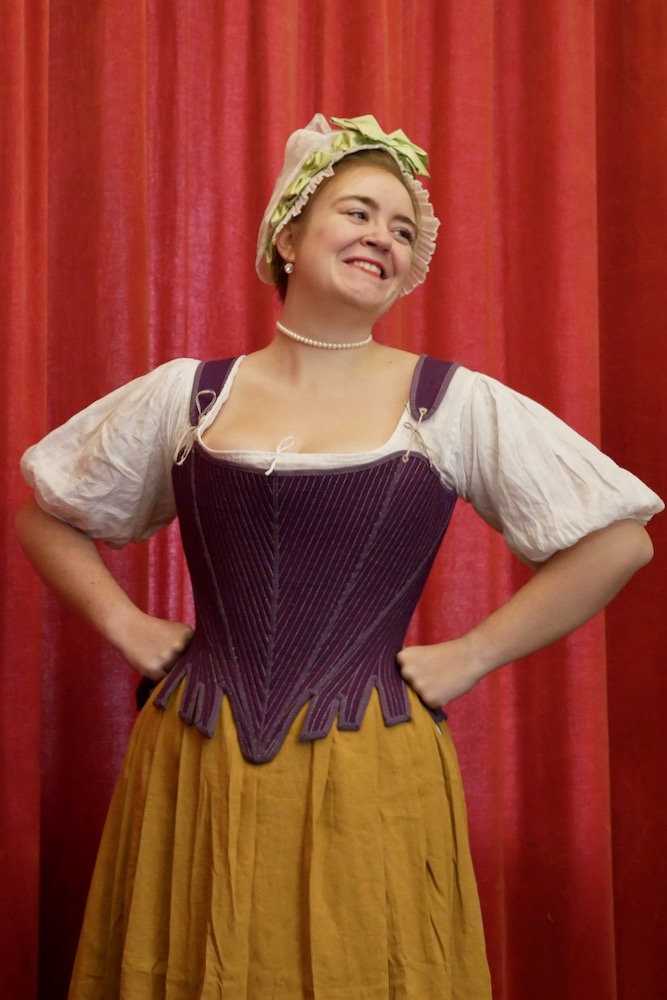
Based on their glorious photos by Lars of @till.0.36, they had just as much fun as Nina and Jenni and I had at our shoot!
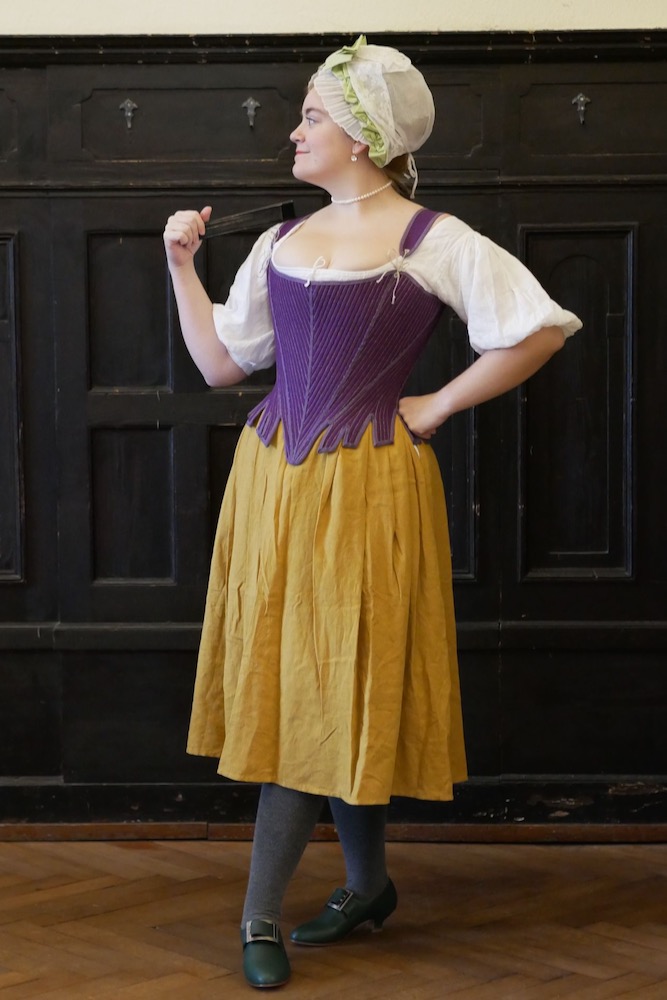
The yellow and purple combination is so striking, and the fit and finish of her stays is perfection.
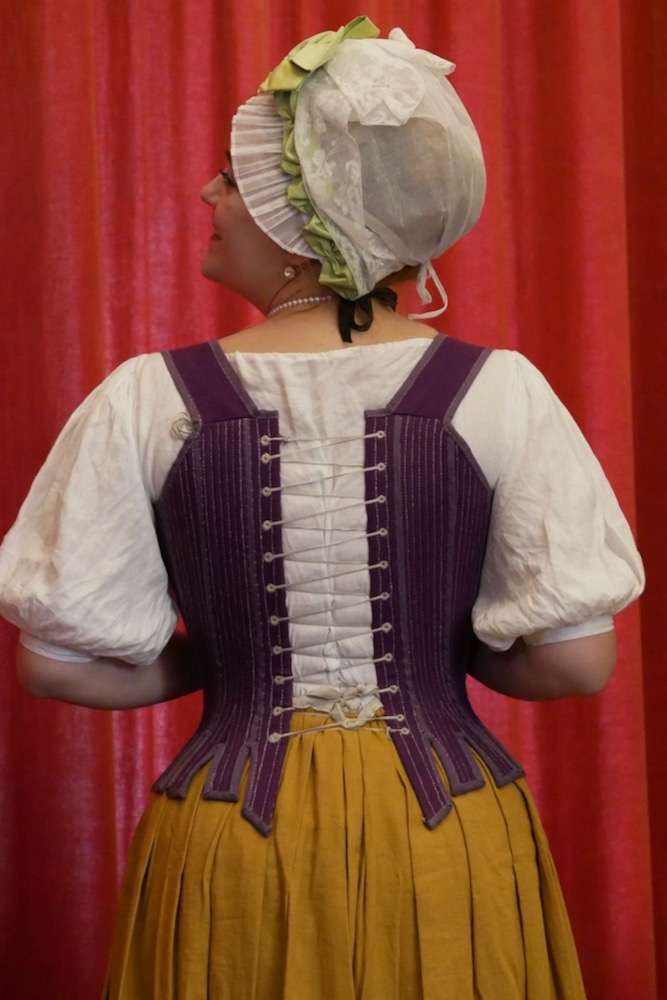
Jasmin and Cecilia’s stays are View A: Historical in Size 38 Curvy Fit, with straps. She added 3/8”/1cm to the front bust upper edge. The stays are made from purple linen, and bound in purple linen tape. They have been made with a larger lacing gap, so they can also be worn by the model in a smaller size.
Summer @summers.stitchery
You just get to see one photo of Summer’s stunning stays, but it’s glorious enough that that’s enough.
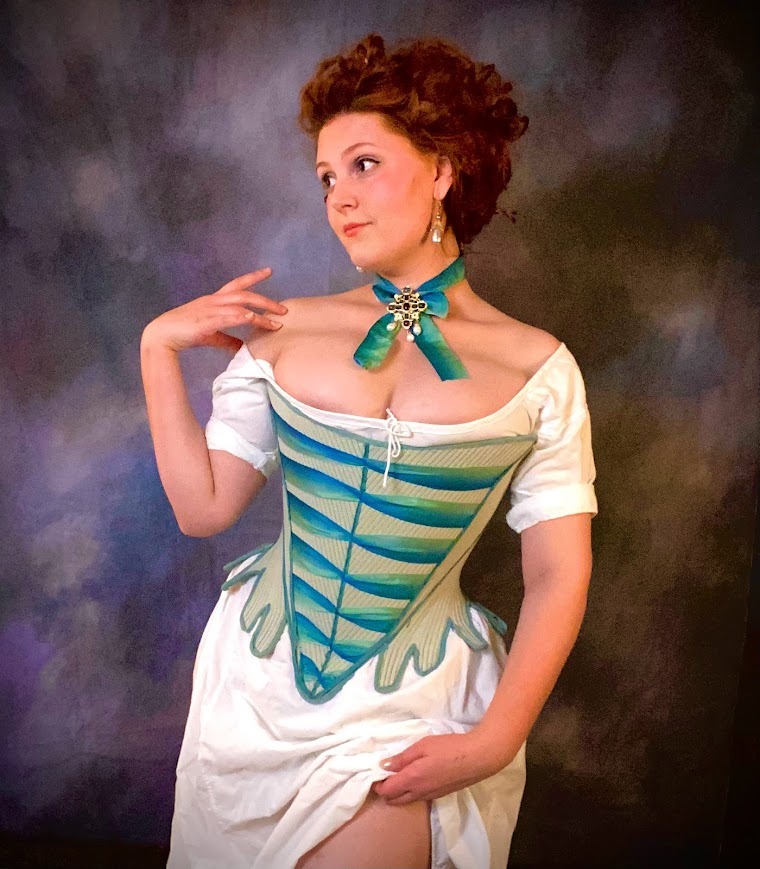
I’m delighted that one of the testers did laddered ribbon ornamentation down the front of their stays! The effect is just gorgeous, and a lovely nod to some of the extant stays we based the pattern on.
Summer made View A with the View B ’Theatrical’ construction methods. Her sea green fashion fabric is flatlined with black cotton sateen, with a layer of coutil for more strength and a cotton lining.
She made the Size 38 Curvy, with an extra 1’’/2.5cm added to the front panel, and 3/8’’/1cm cut away under the arms.
Rebecca of Duchess of Downs Street
Not only did Rebecca make the most glorious pink brocade View A stays:
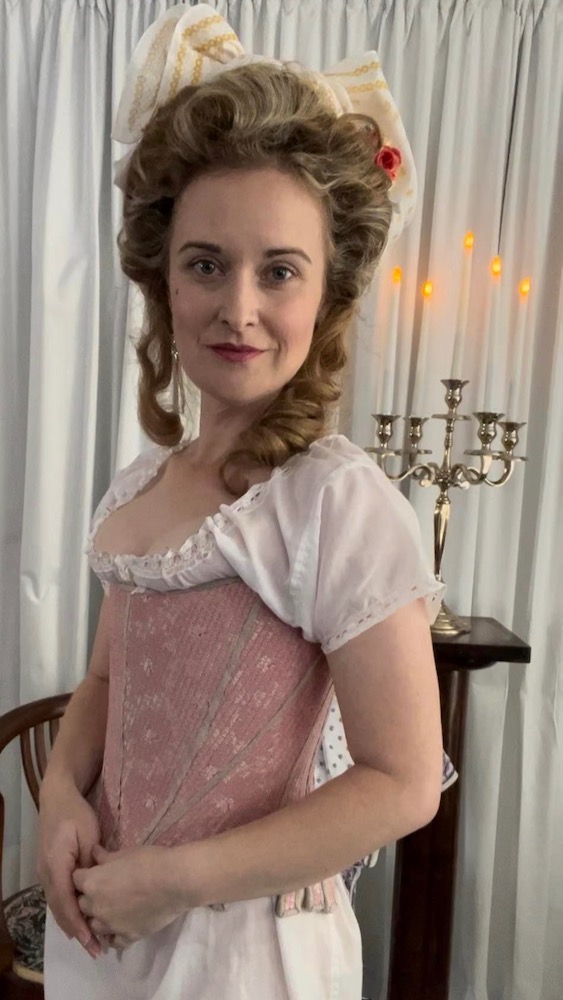
She styled her hair to absolute perfection, had the most delightful accessories, AND got photographs of herself with her cat!
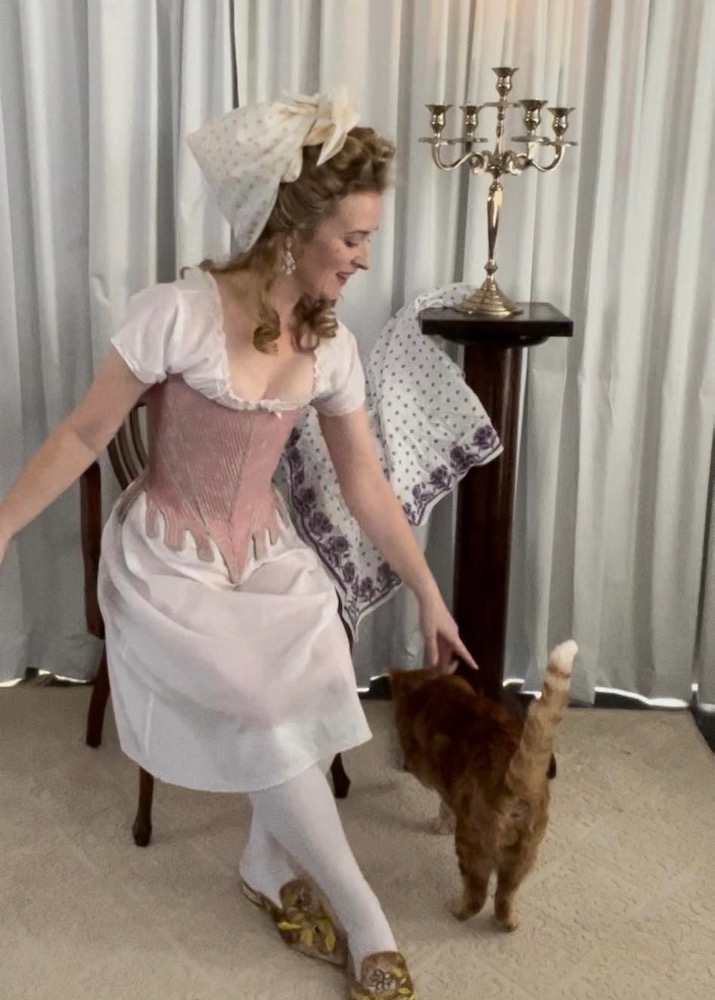
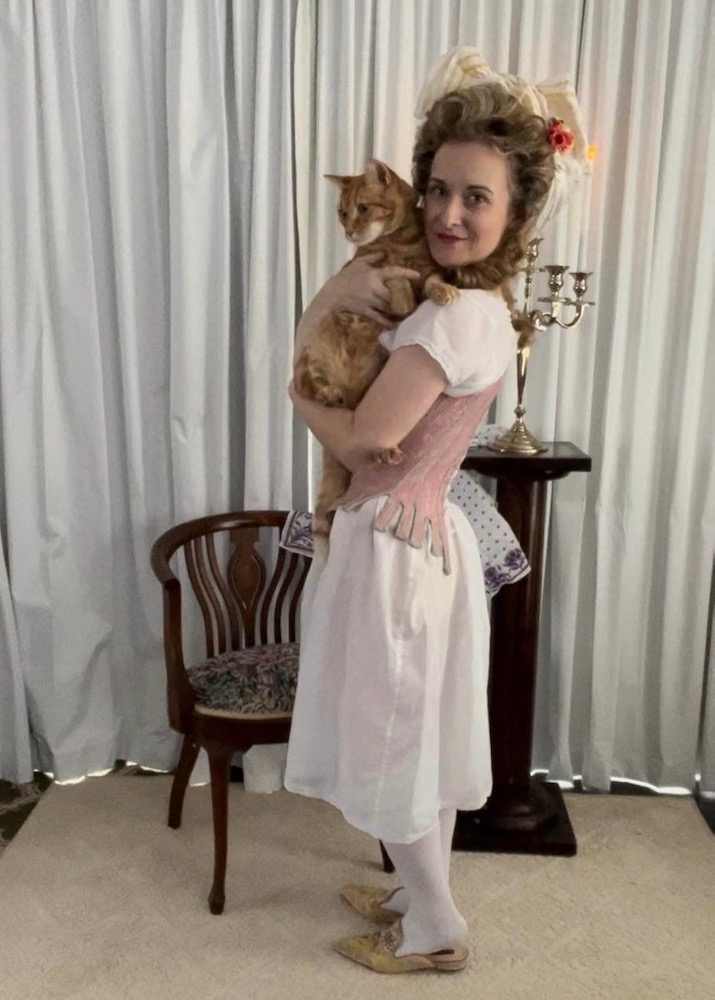
Truly, that is the way to my heart!
And not only that, but she included progess shots all the way through, and final interior images:

The interior of stays with bust rail by Rebecca of Duchess of Downs Street
Rebecca’s stays are made of linen with a silk outer. She used the Historical instructions, but sewed her boning channels by machine, and made Size 32, Straight, without straps.
Irwin of @irwin.tseing
Remember how I said that pink and purple were the themes for the Cassandra Stays testers? Well brace yourself for the epitome of pink brocade stay gorgeousness:
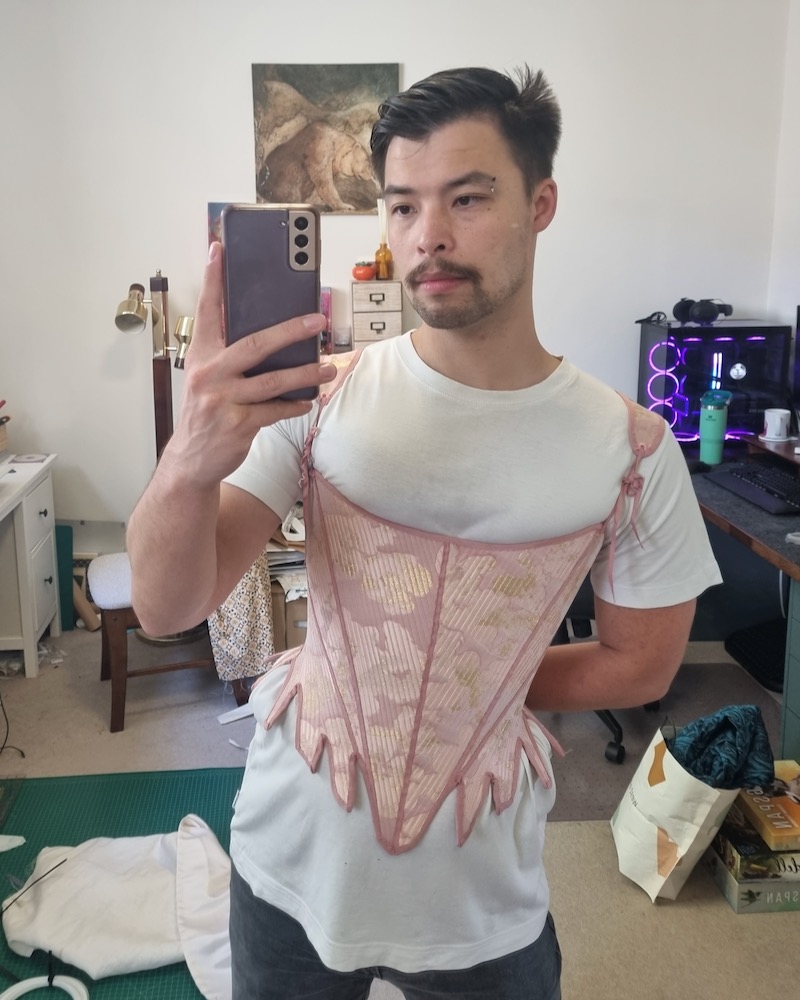
Utterly divine!
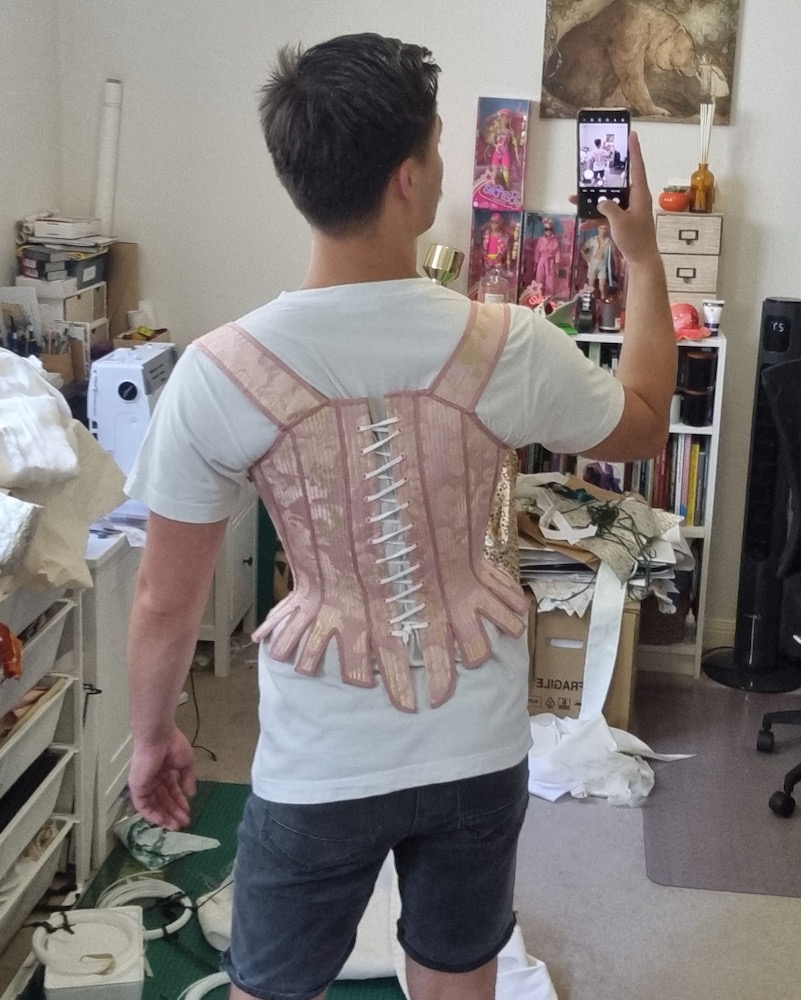
Like us, Irwin was coping with the Southern Hemisphere summer swelter, so he styled his stays with shorts (very smart!), but if you head over to his IG you can see them with a beautiful pink silk petticoat (and enjoy all the other gorgeous things he’s made).
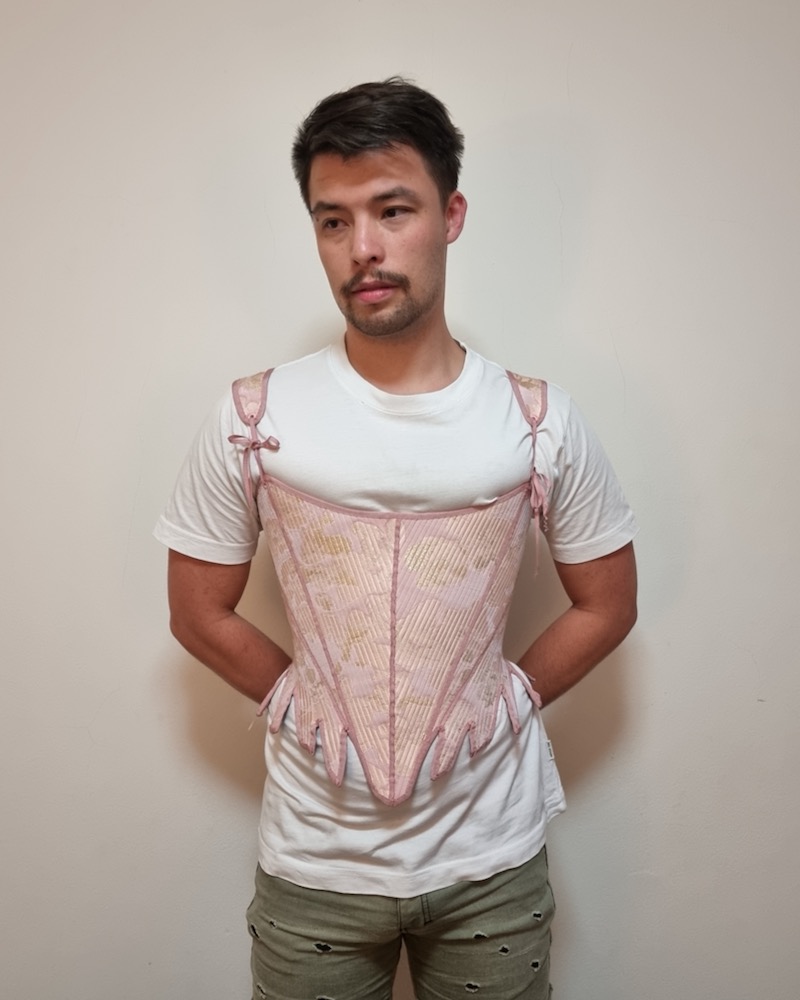
He made View A, but using the Theatrical construction methods for faster sewing, and his stays are Size 40, Curvy. And look at the curves they give!
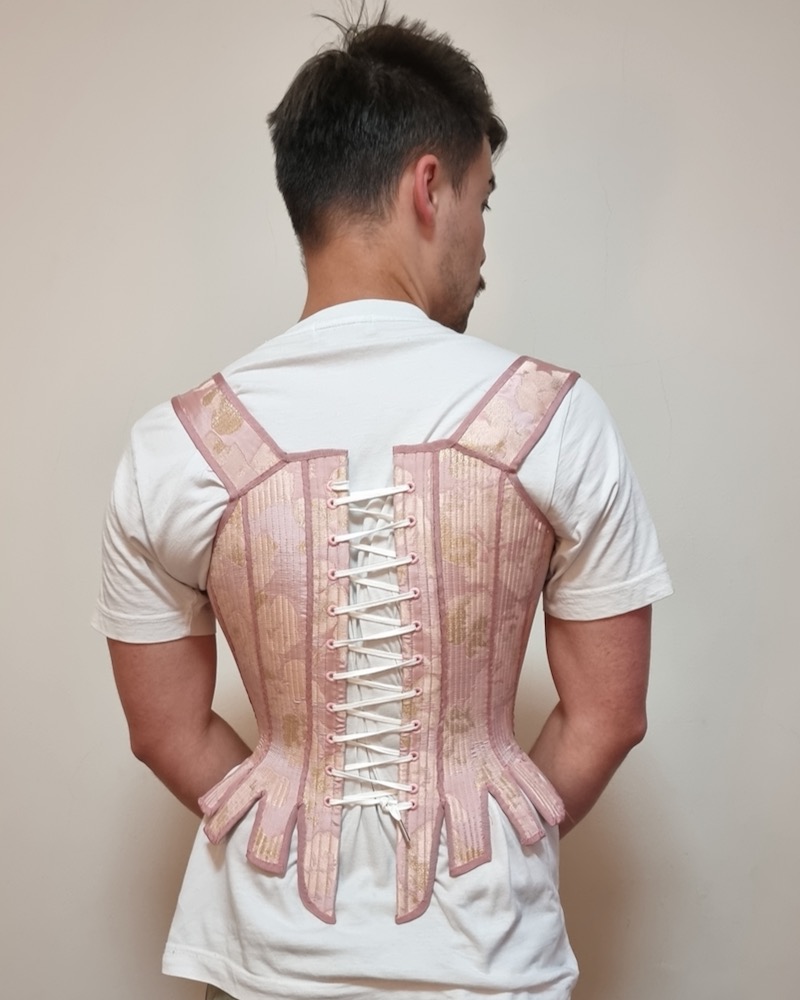
Jessica of @scotchirish1775
For the final entry in the parade of pretty pinks and purples, Jessica’s charming stays in a lovely mauve made from linen dyed with logwood – totally accurate to the 18th century, and one of the ways they achieved purple in-period.
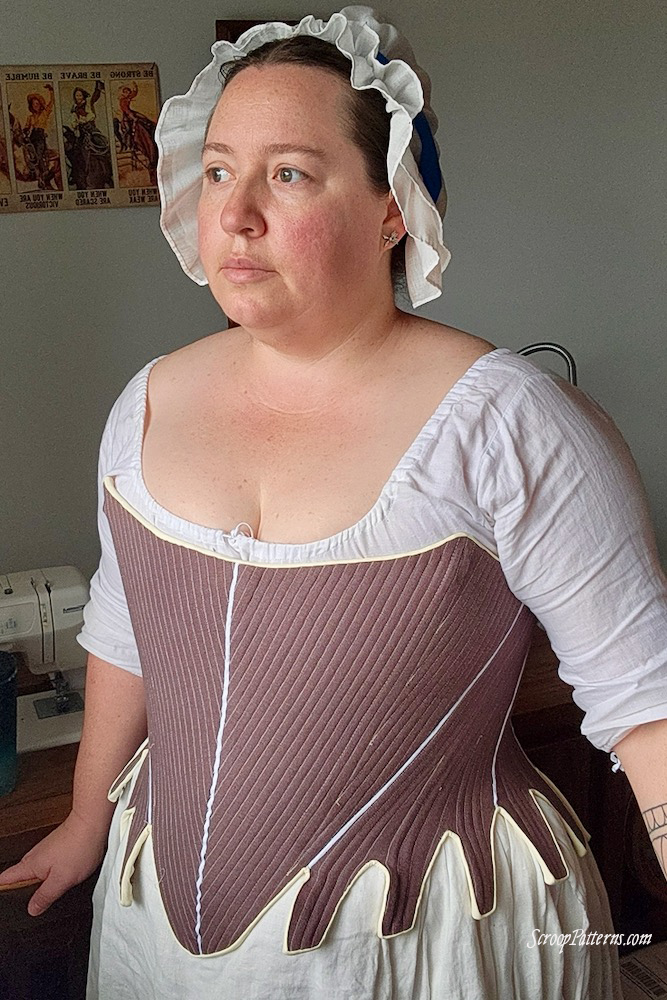
Her stays are bound in yellow lambskin, so you can see how the leather binding techniques in the pattern look on a finished bind (so tiny and neat!)
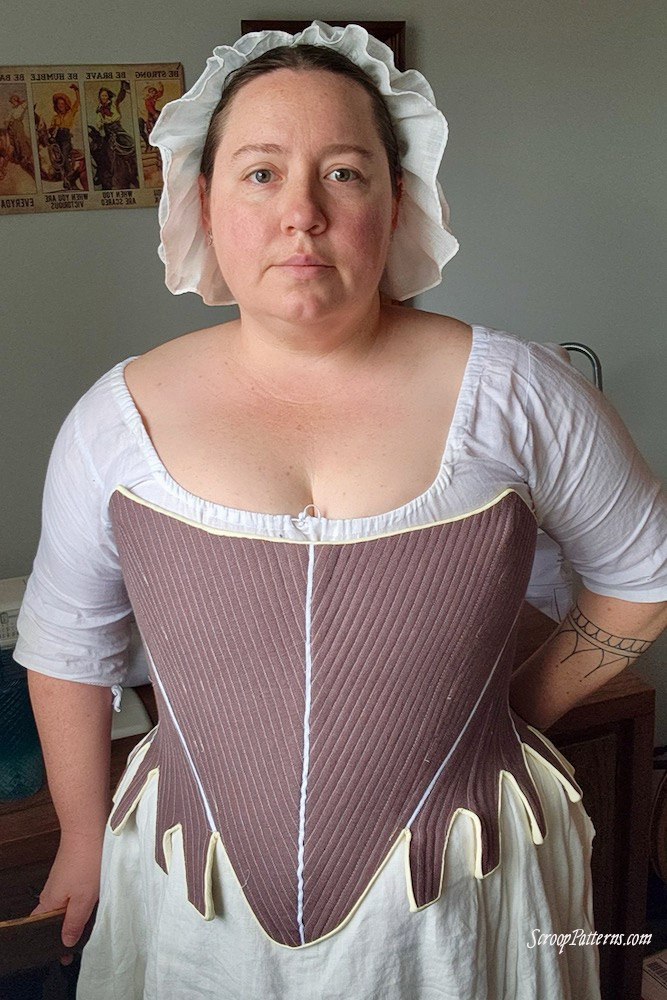
Jessica had to take her photos inside because of the weather, but made up for cramped interiors by including images of the interior of her stays before lining. And who doesn’t love a shot of the guts of a garment so you can see how it is all put together!
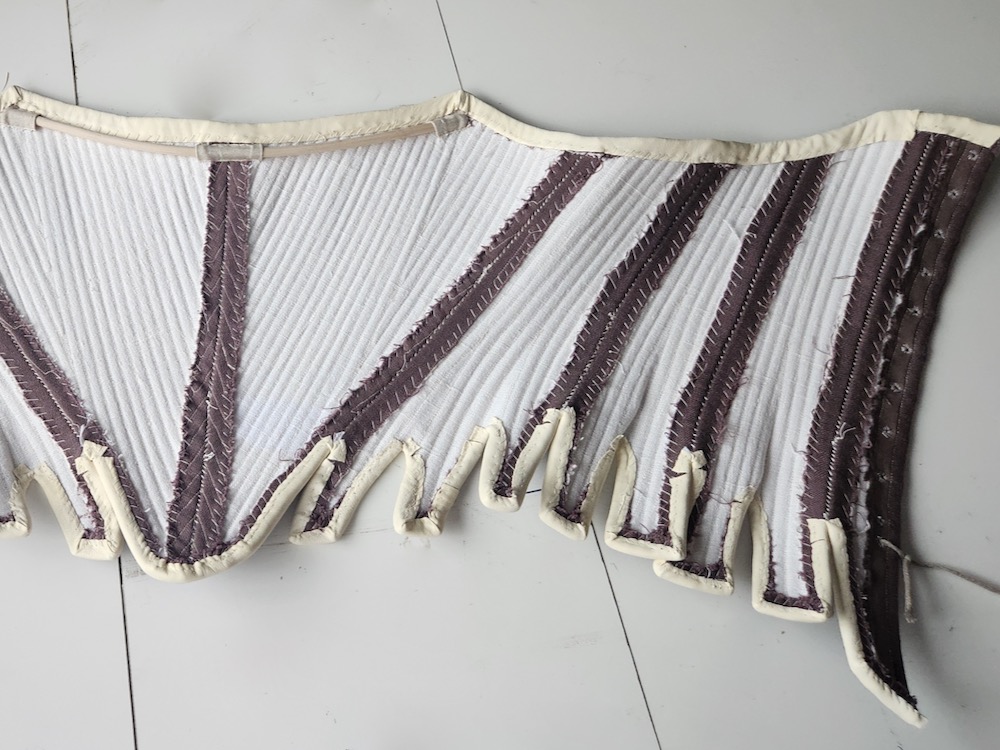
Leather bound stays by Jessica of @scotchirish1775
Klára of @klara-posekana
Klára may be the last entry in the tester roundup, but she is definitely not last in how beautifully made and finished her stays are, nor in how helpful her feedback was. She has the most amazing editor eye, and caught everything in the pattern that was confusing, or mislabelled, or coloured wrong in the instruction images.
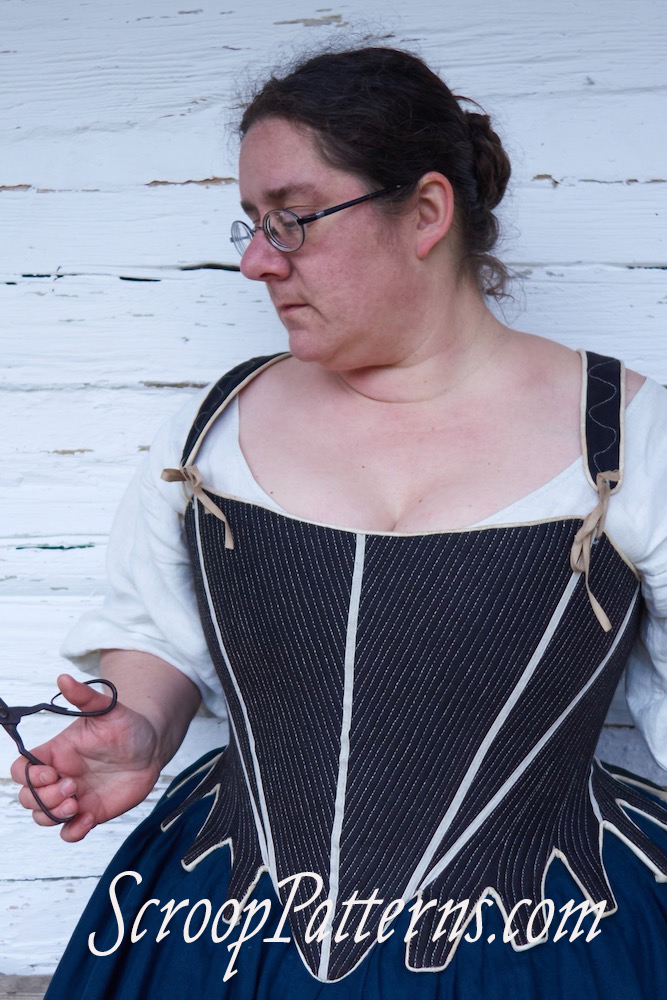
Her exquisite stays are testament that her eye for detail isn’t just confined to paper.
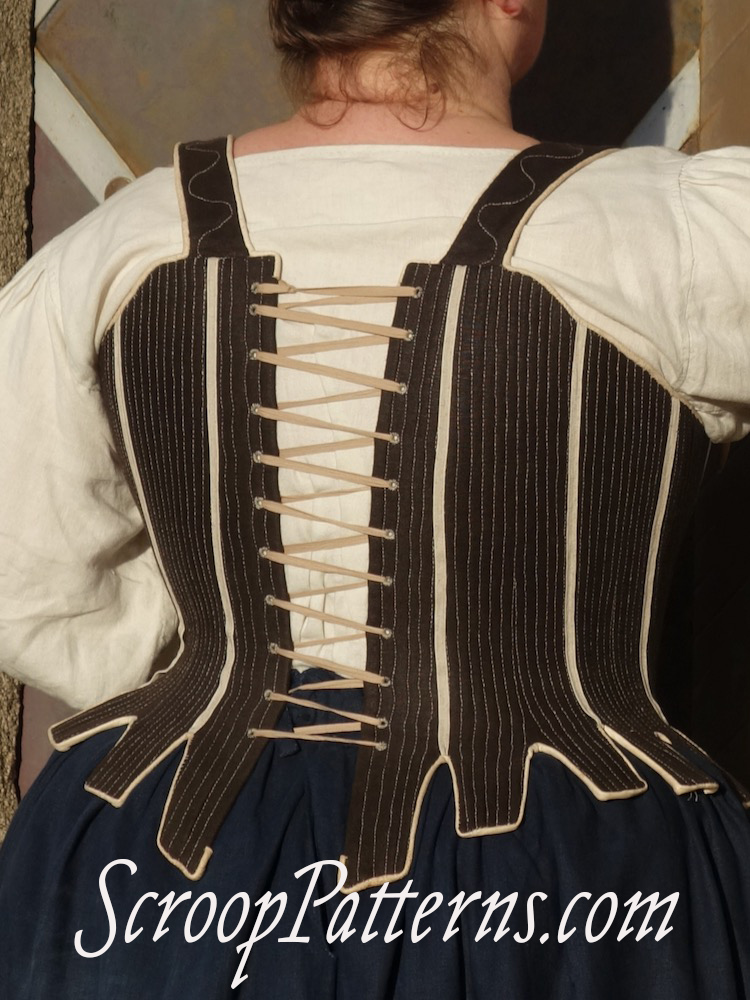
Every element is perfect and precise. They are entirely hand sewn. She made Size 48 Straight Fit, with straps. Her stays are made from brown linen, and bound in ivory kid leather.
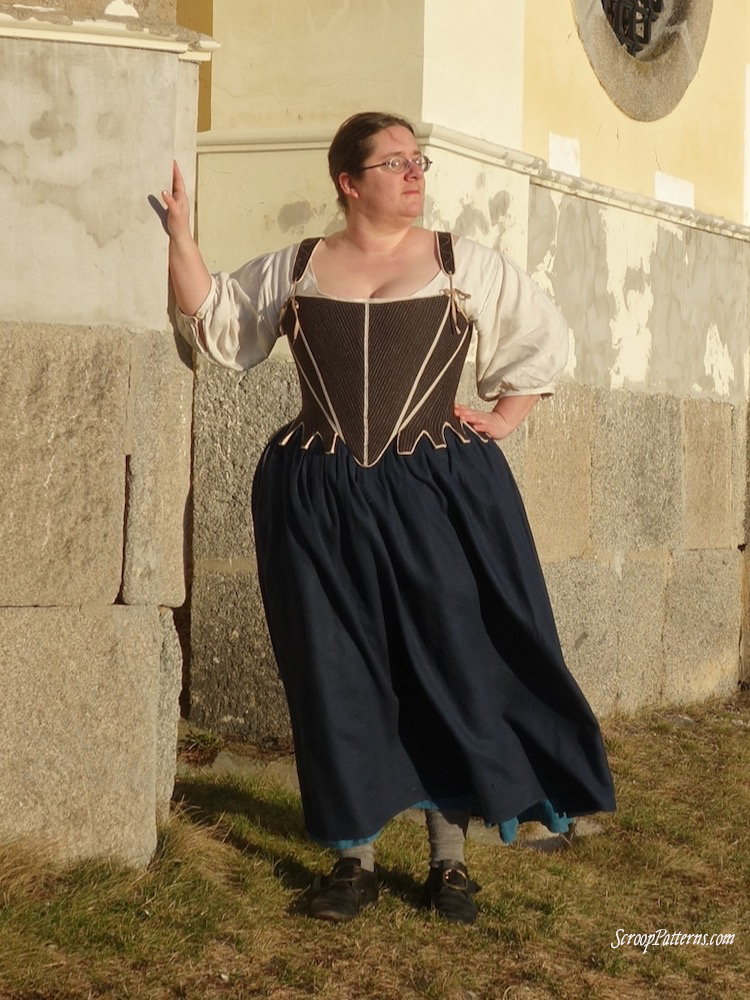
She even took photos at totally appropriate locations: an 18th century living history museum, and a church built in the early 18th century (which also happens to look like the perfect fairytale location)

Once again, a massive, massive thanks to all the testers for their work and feedback and the glorious inspiration they provide!

